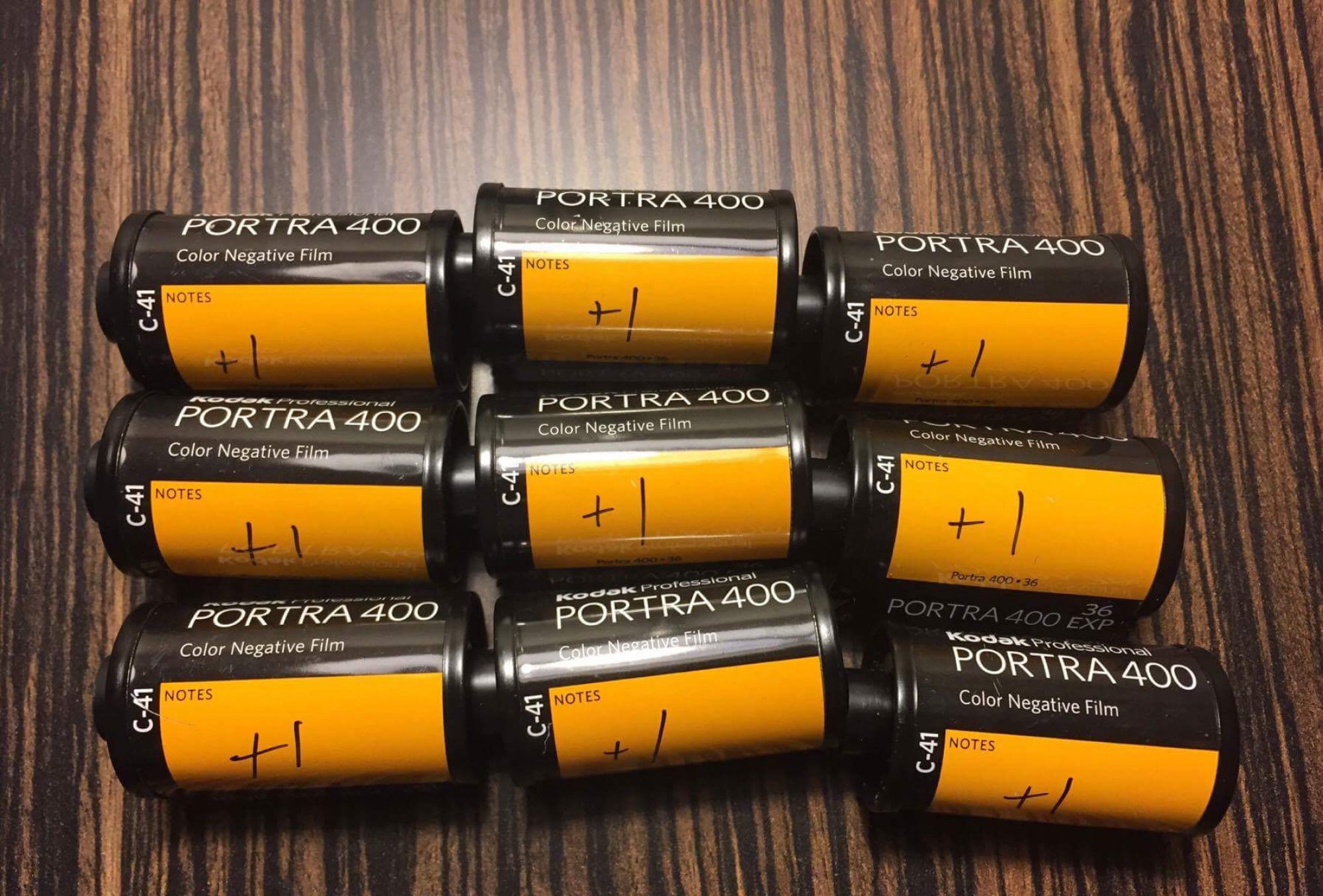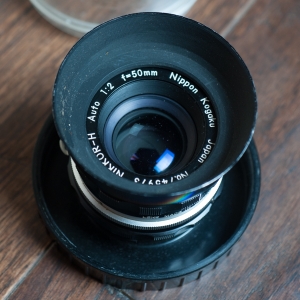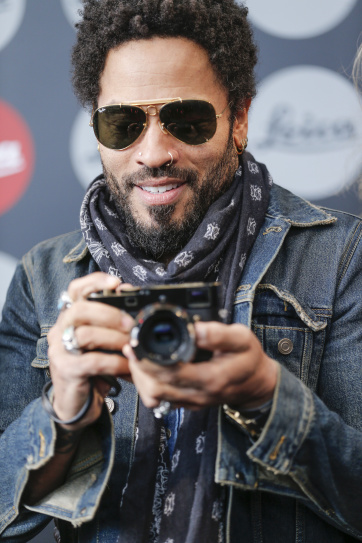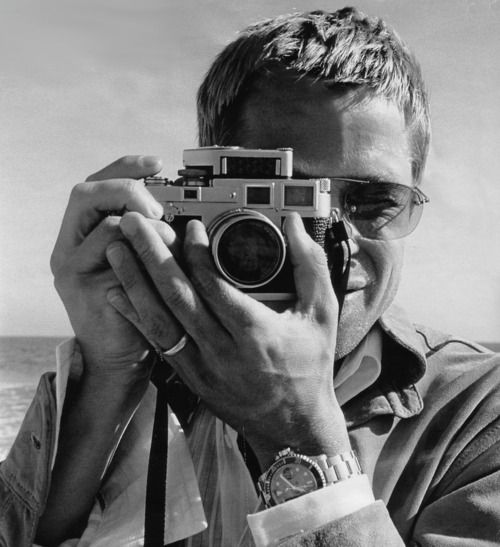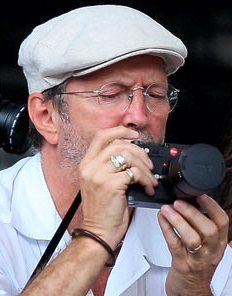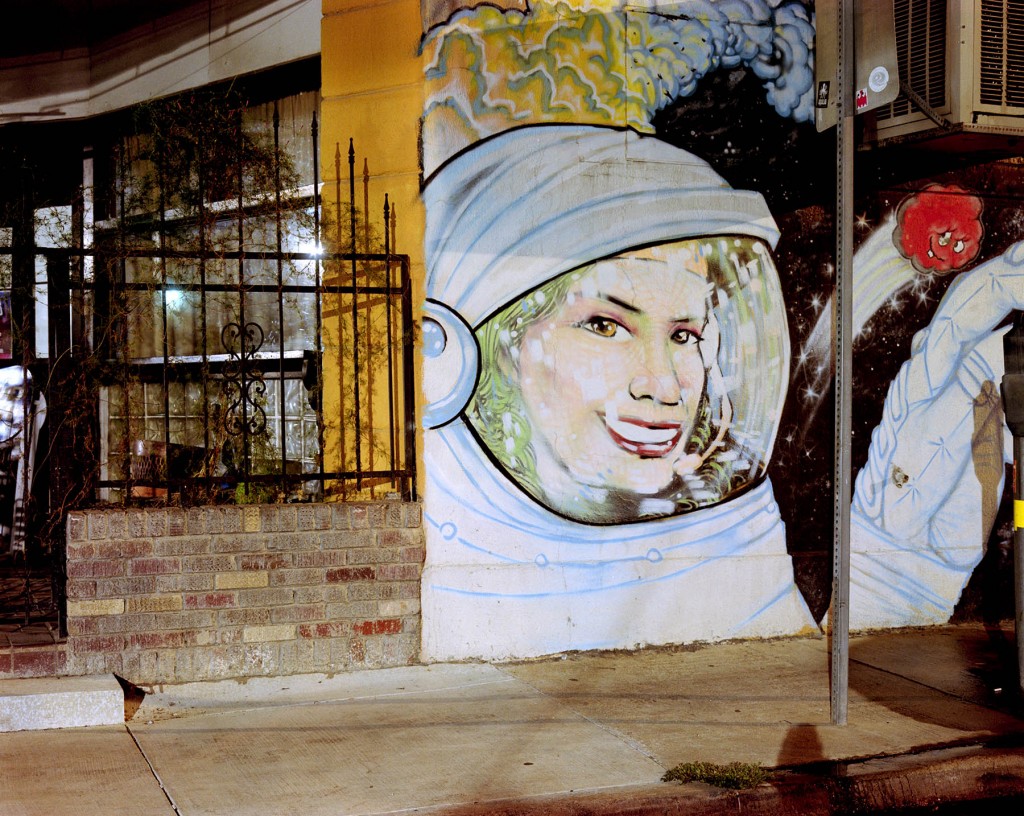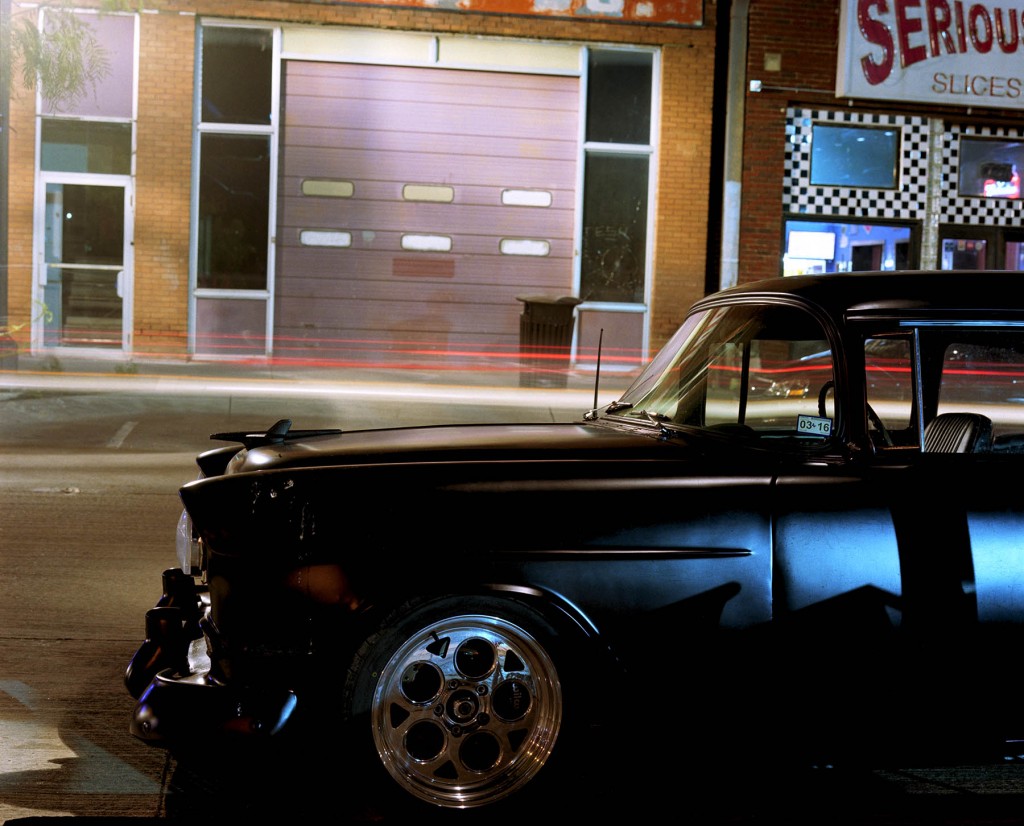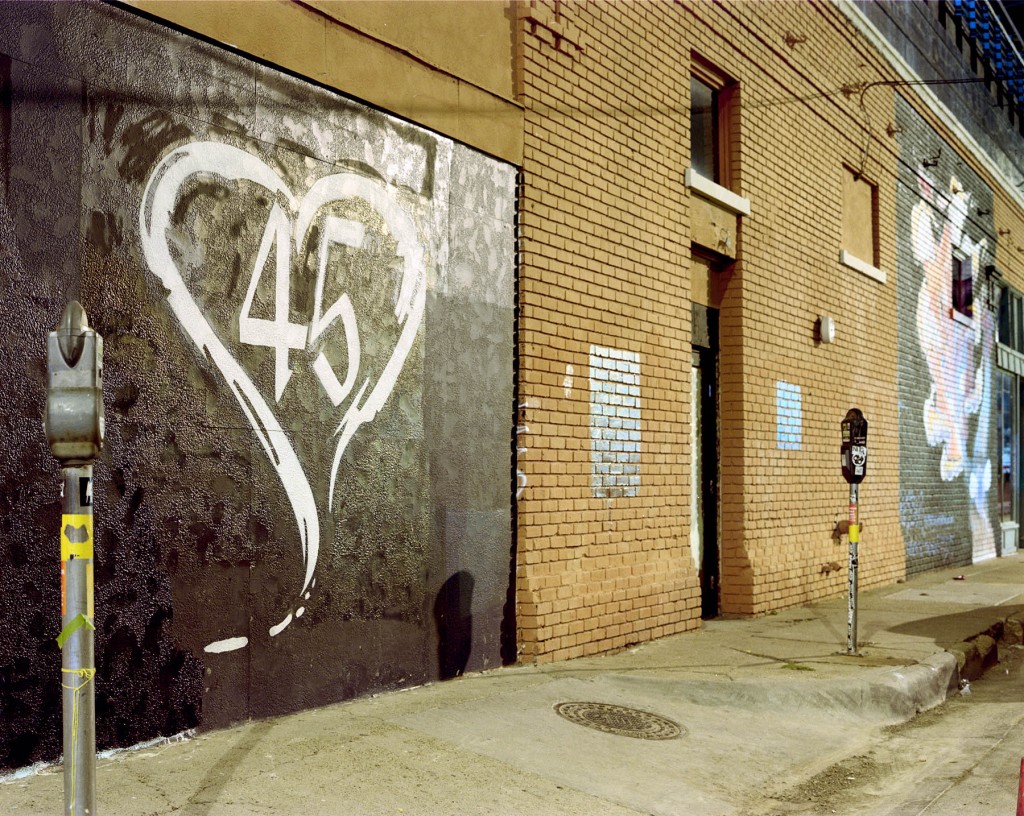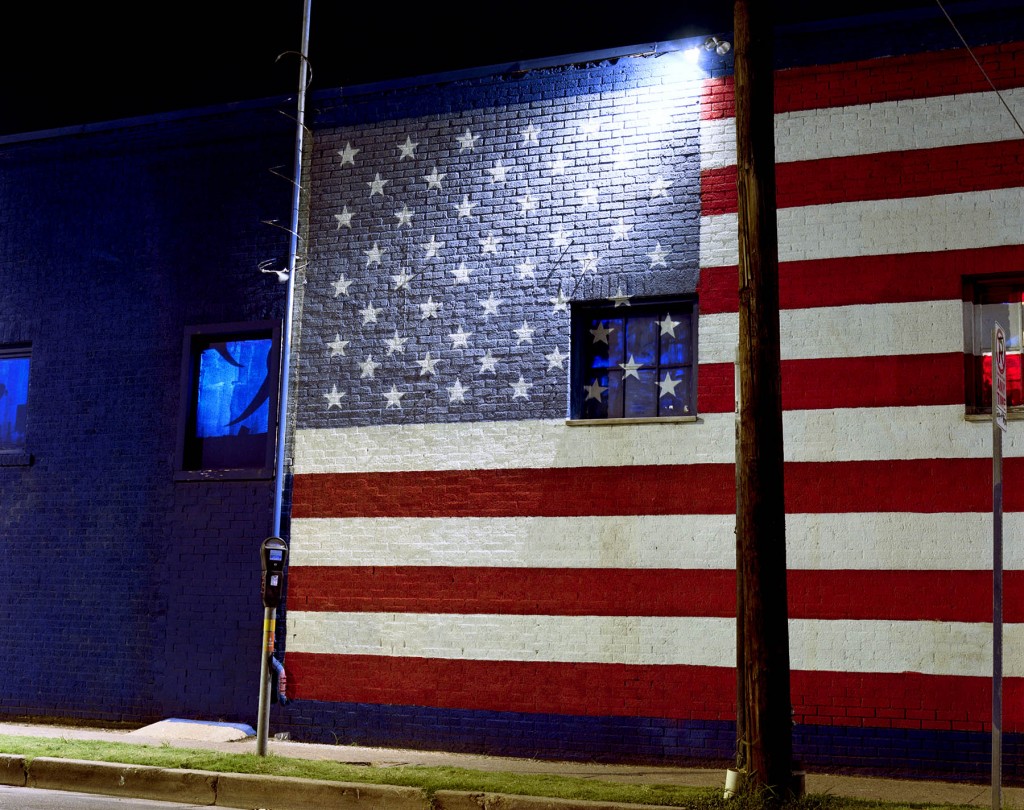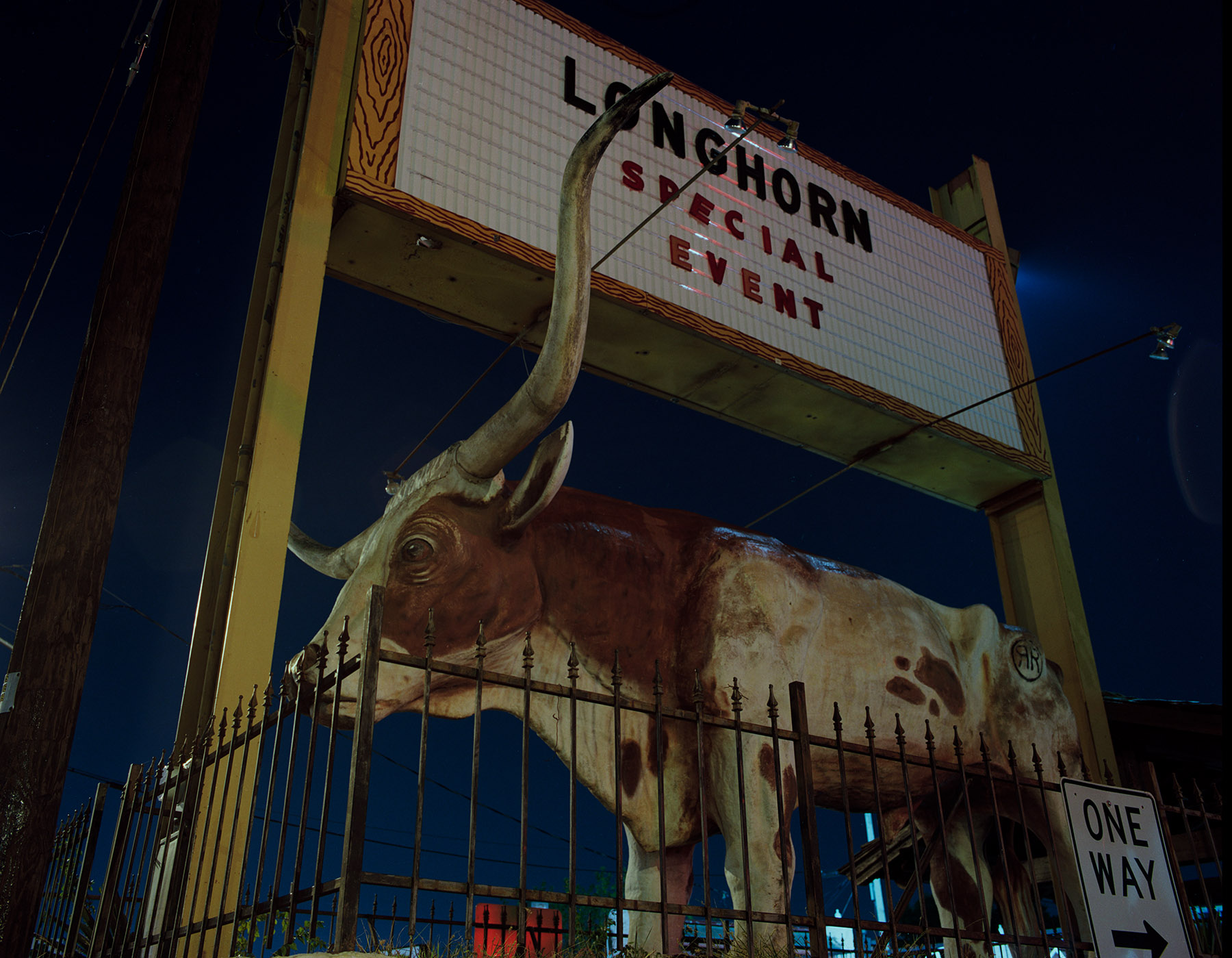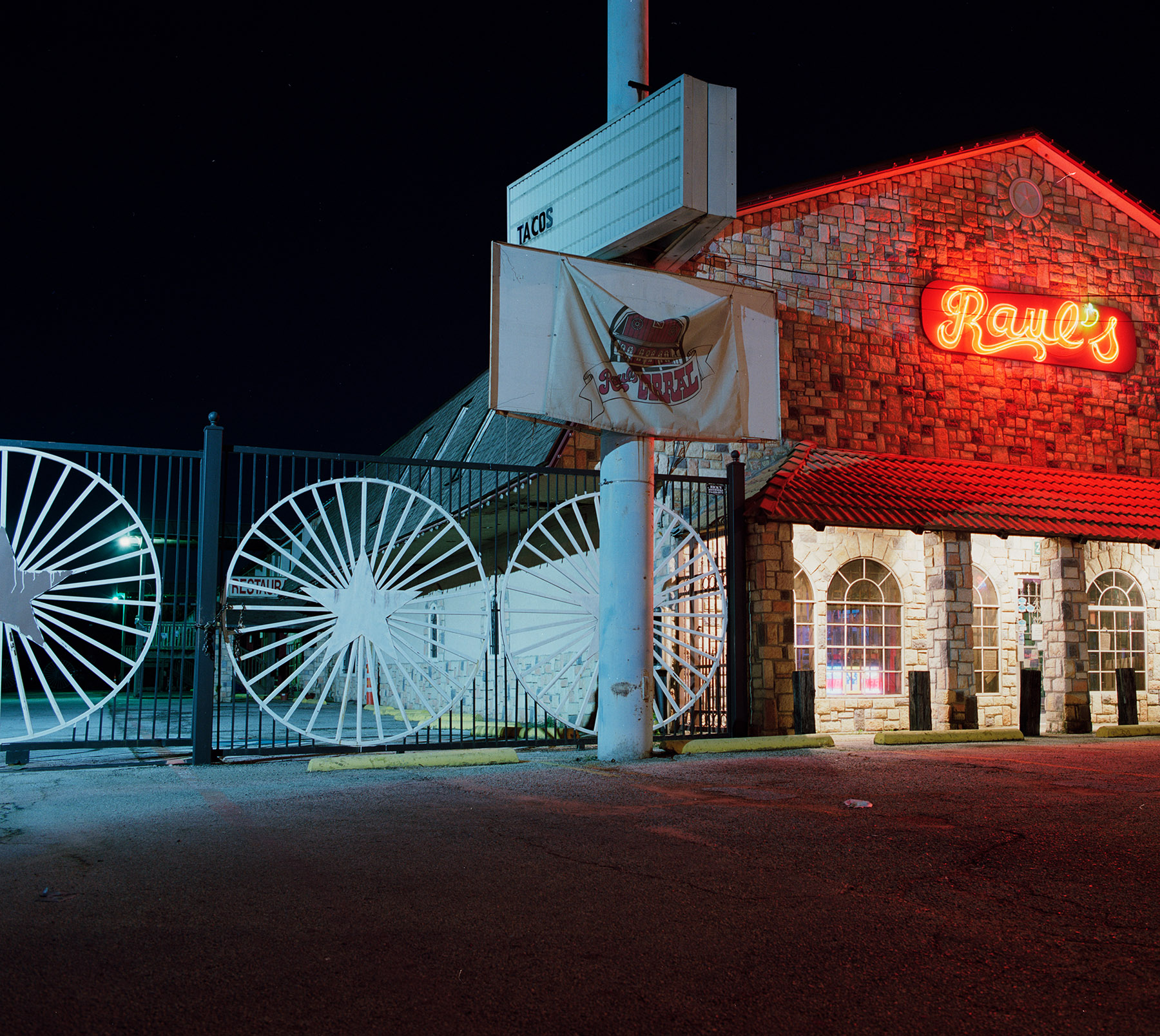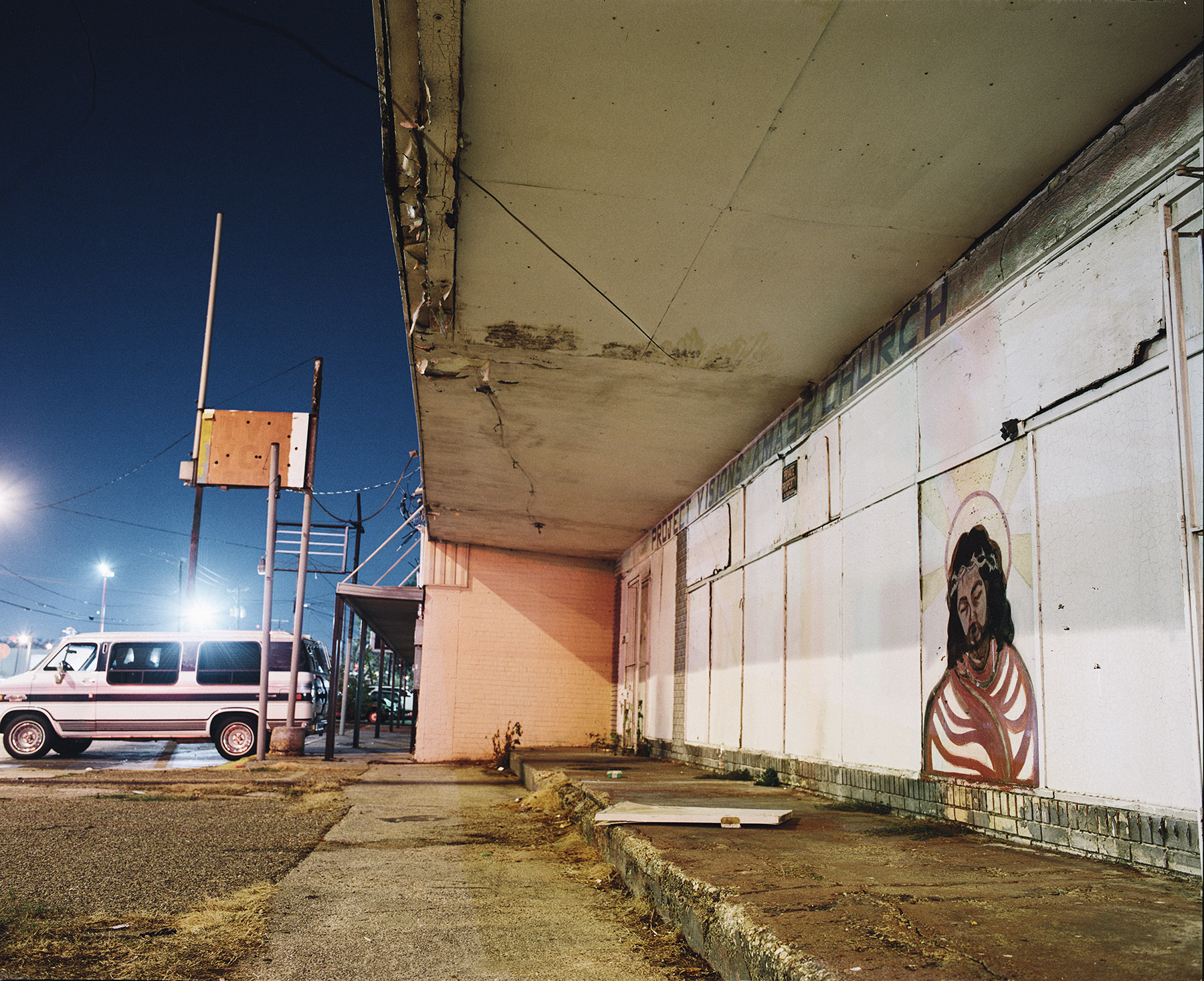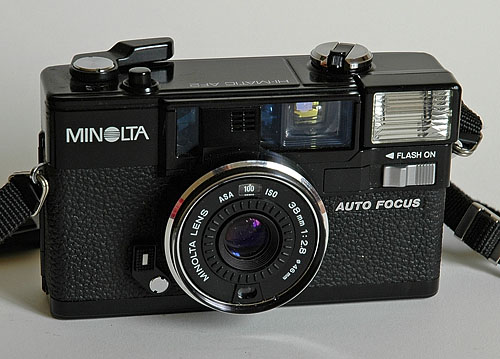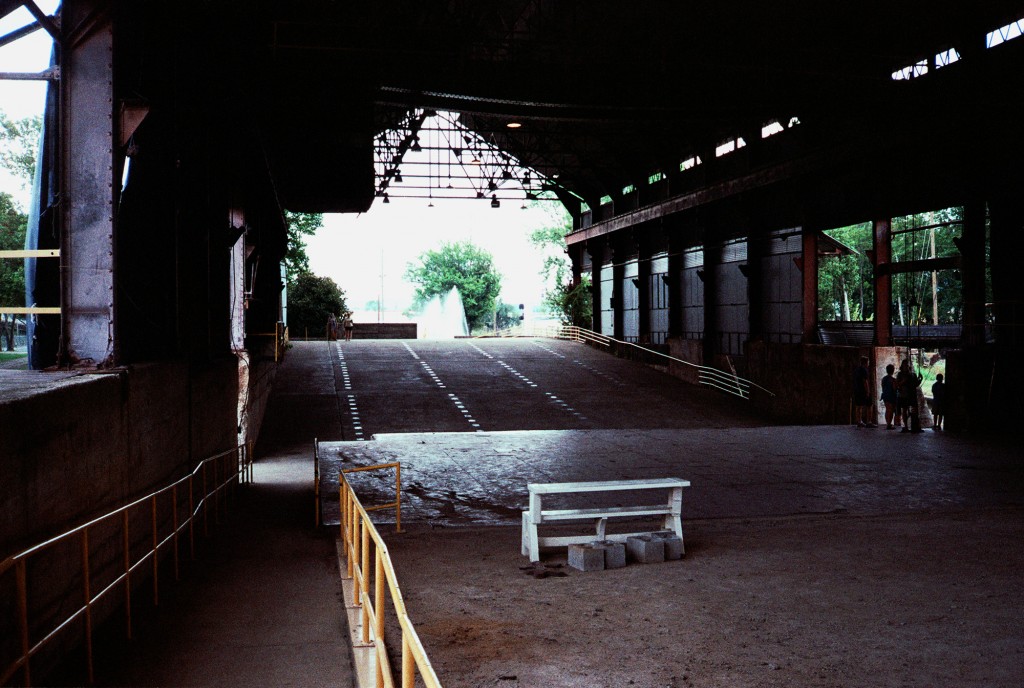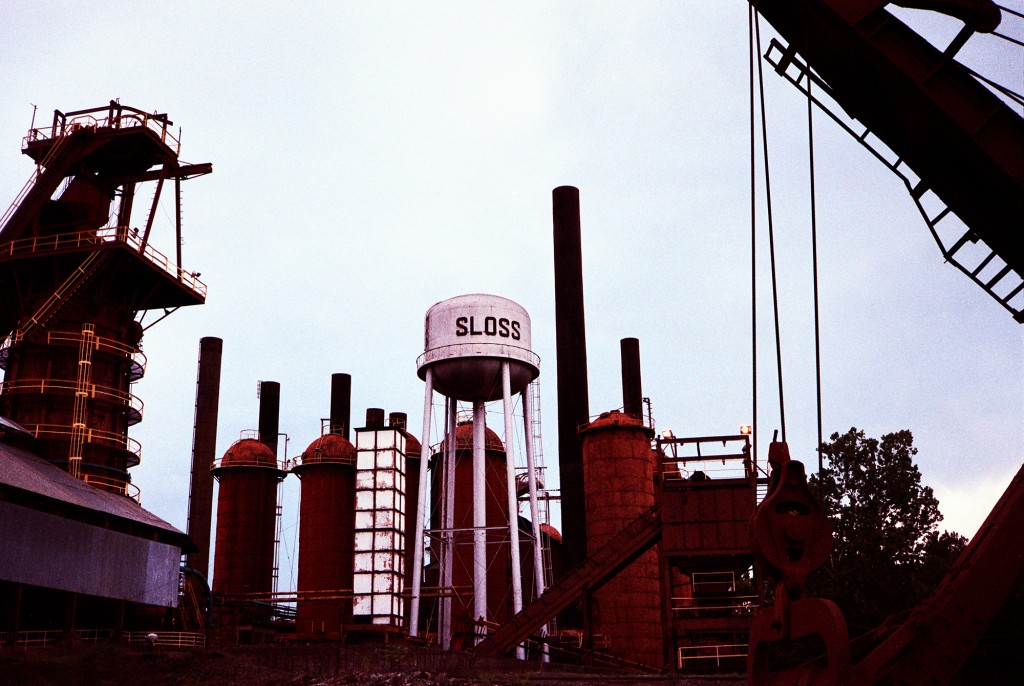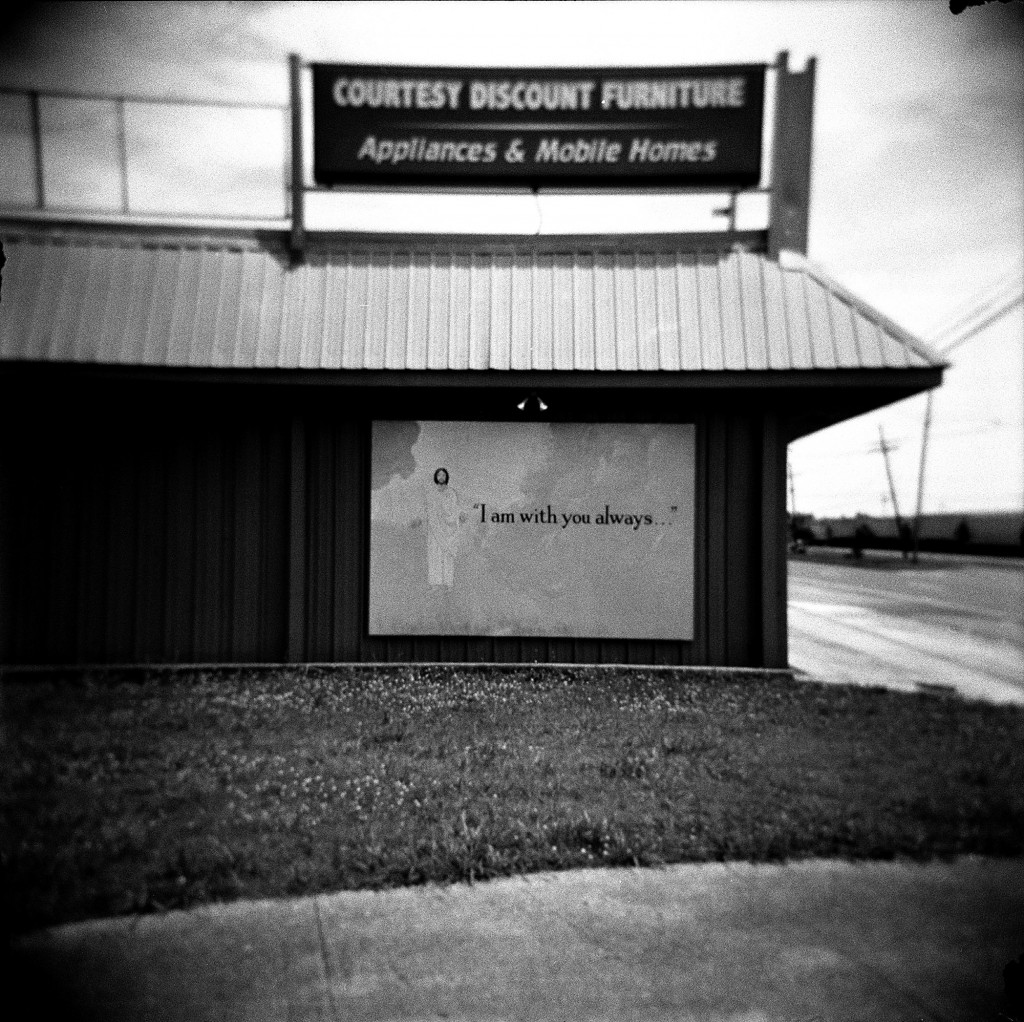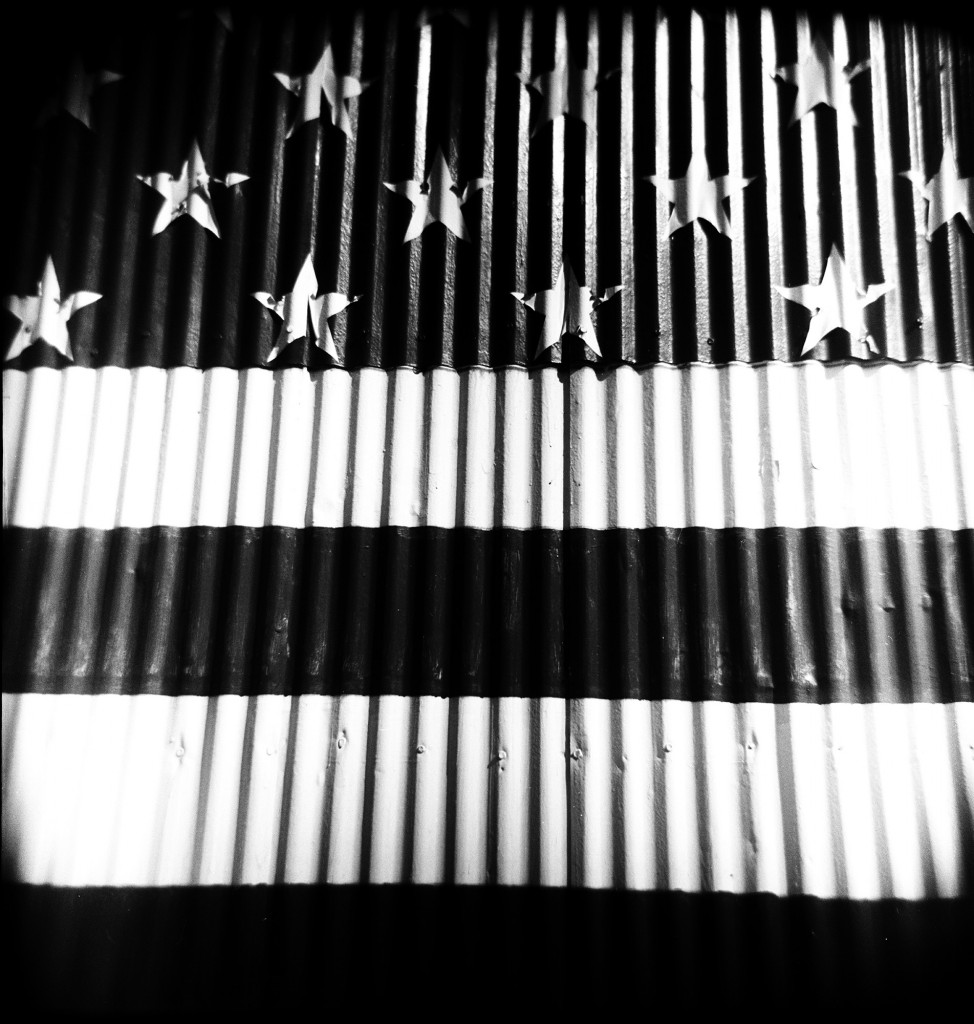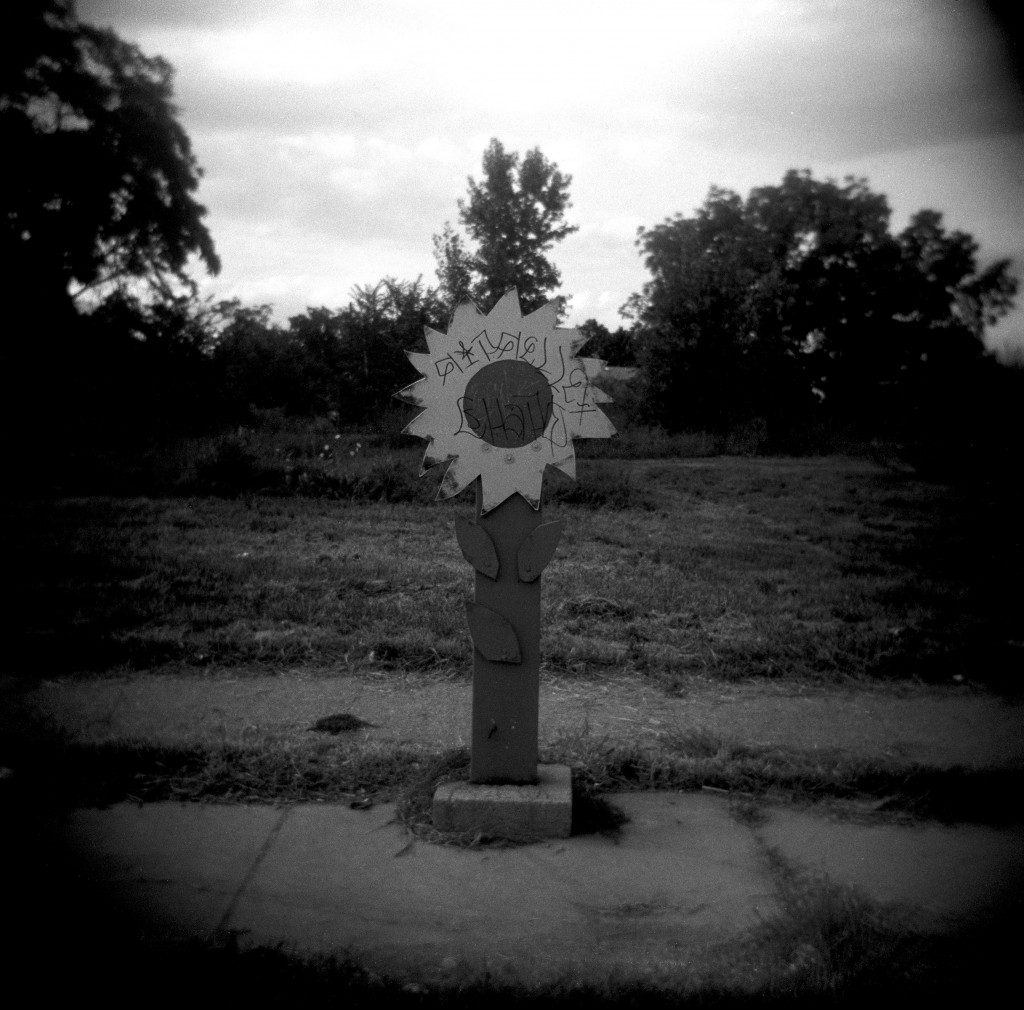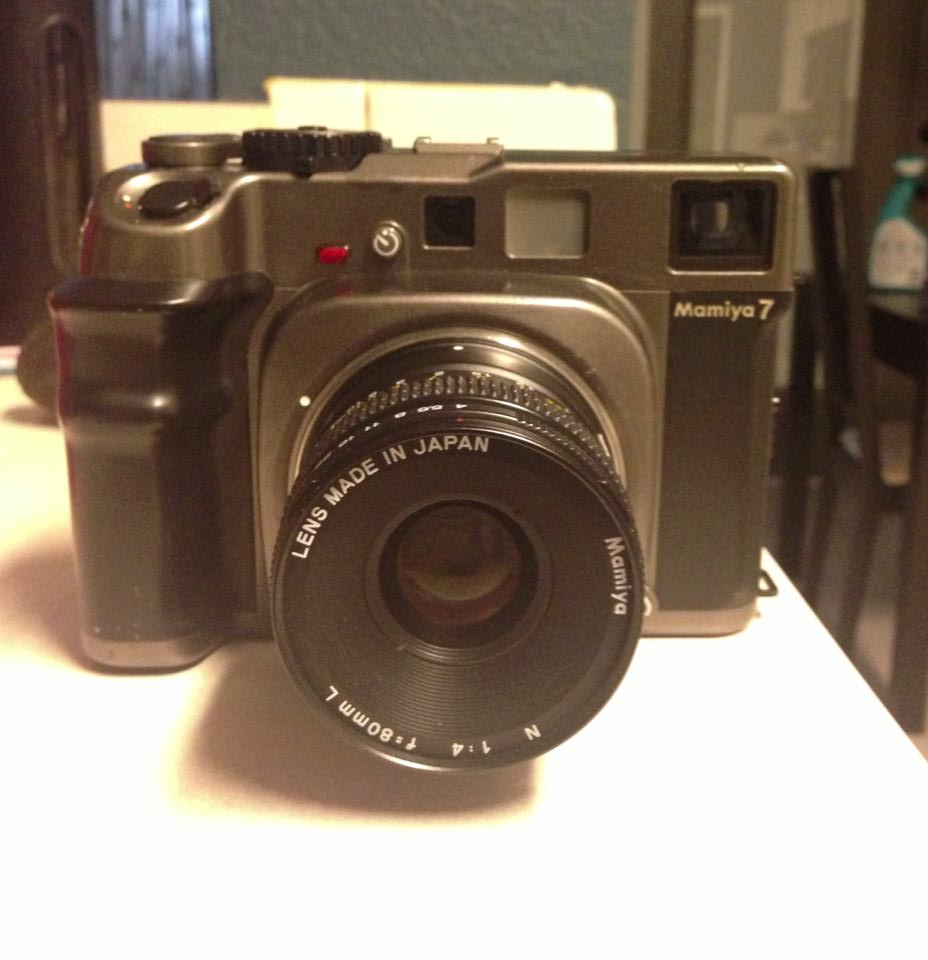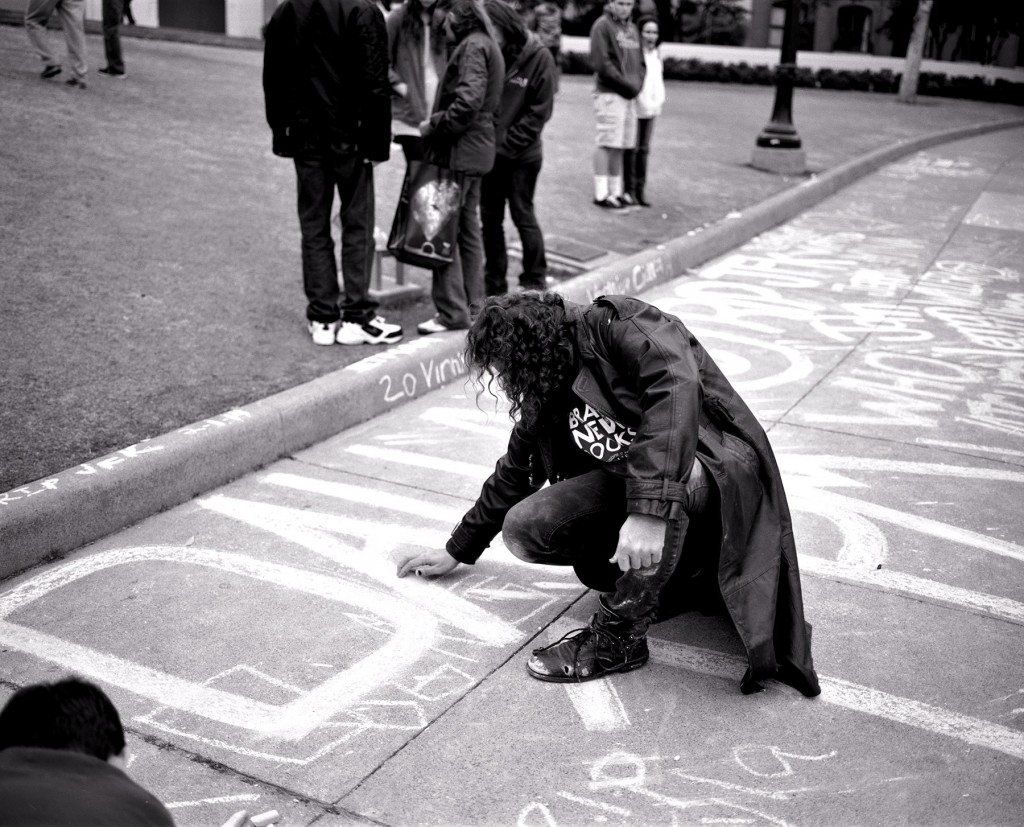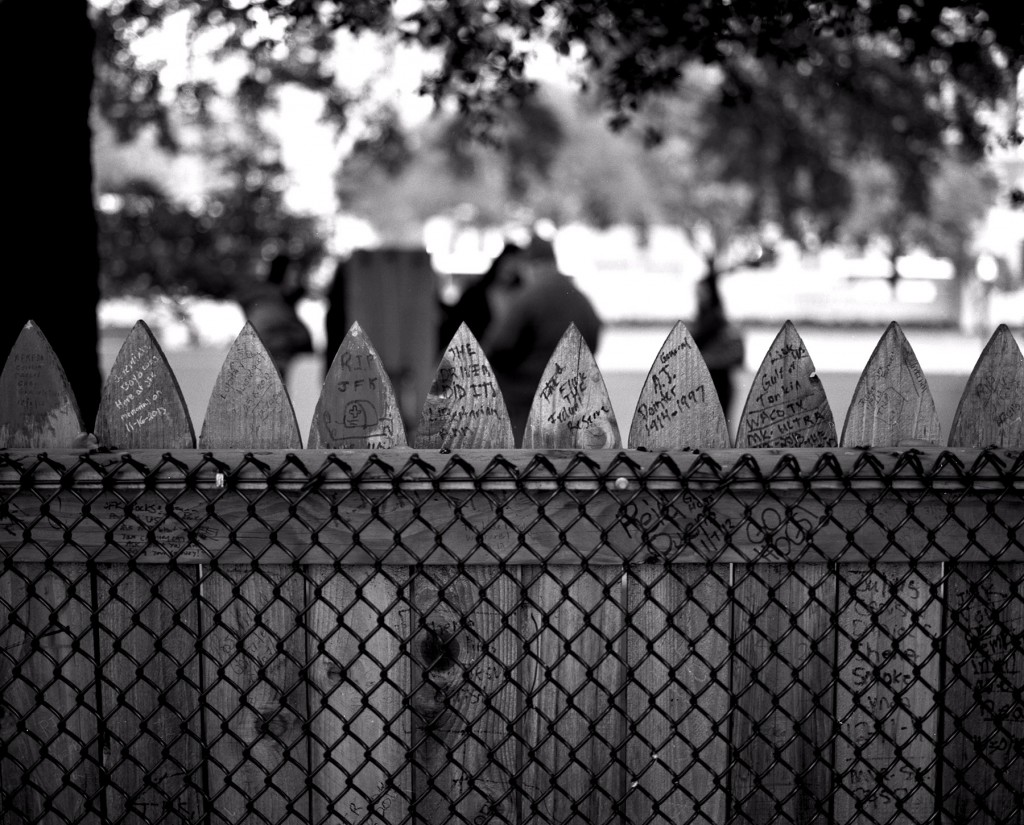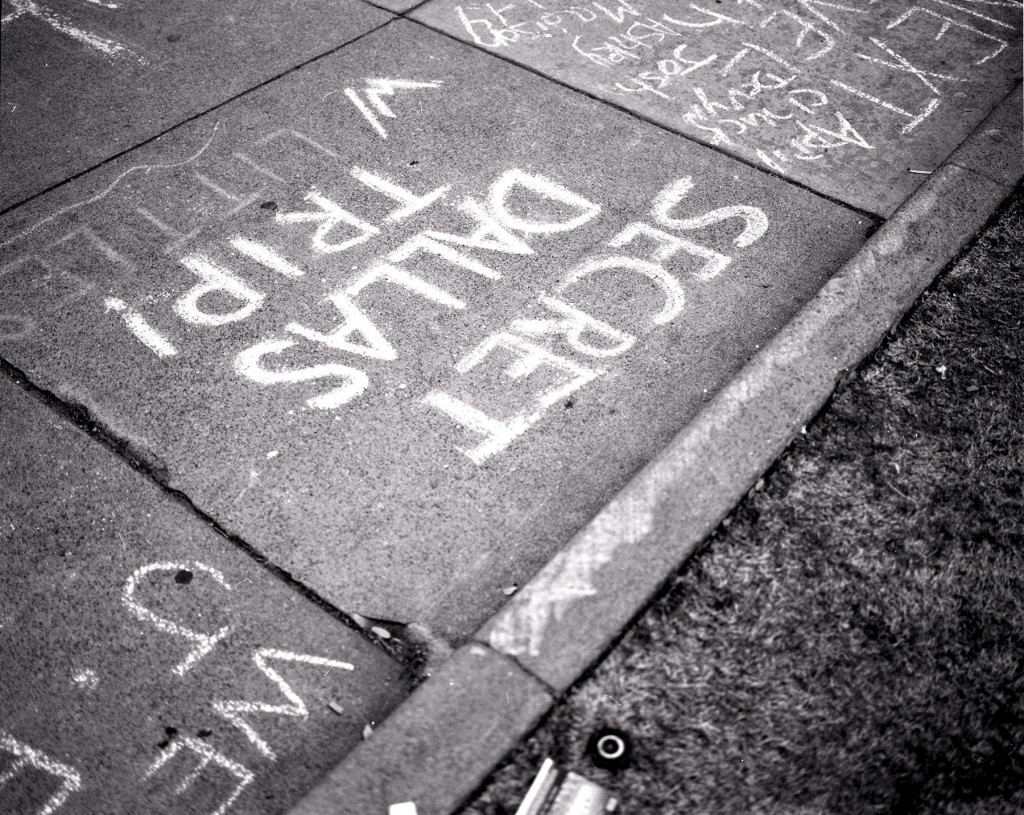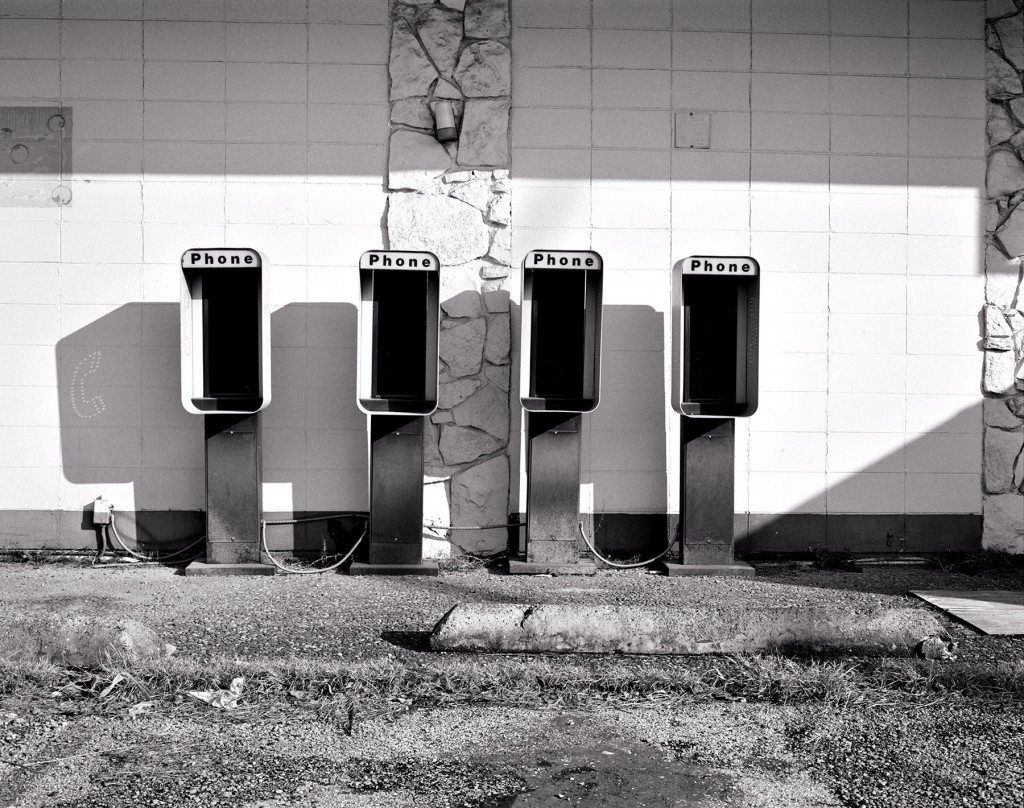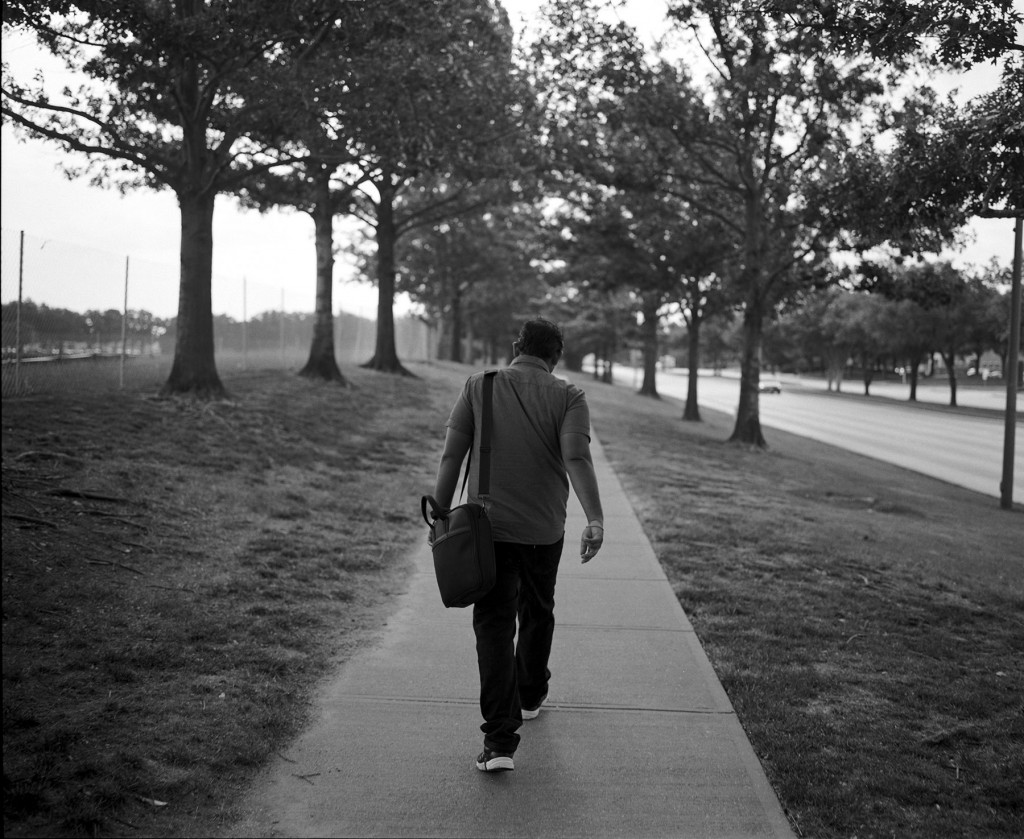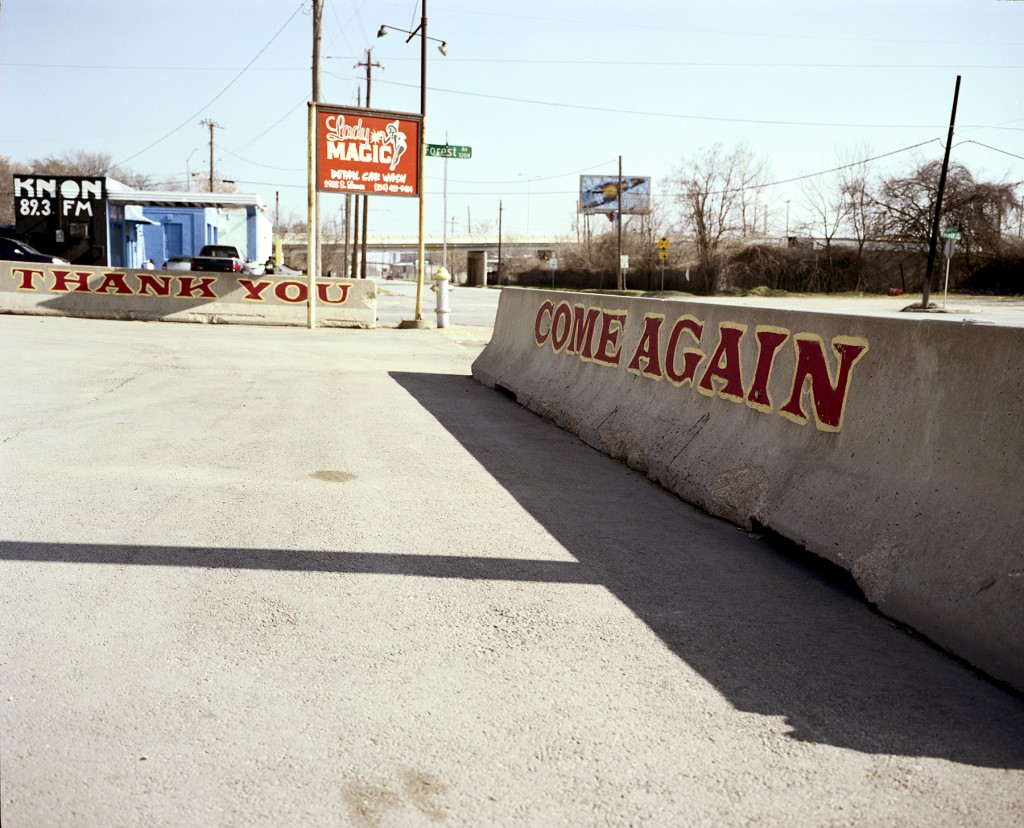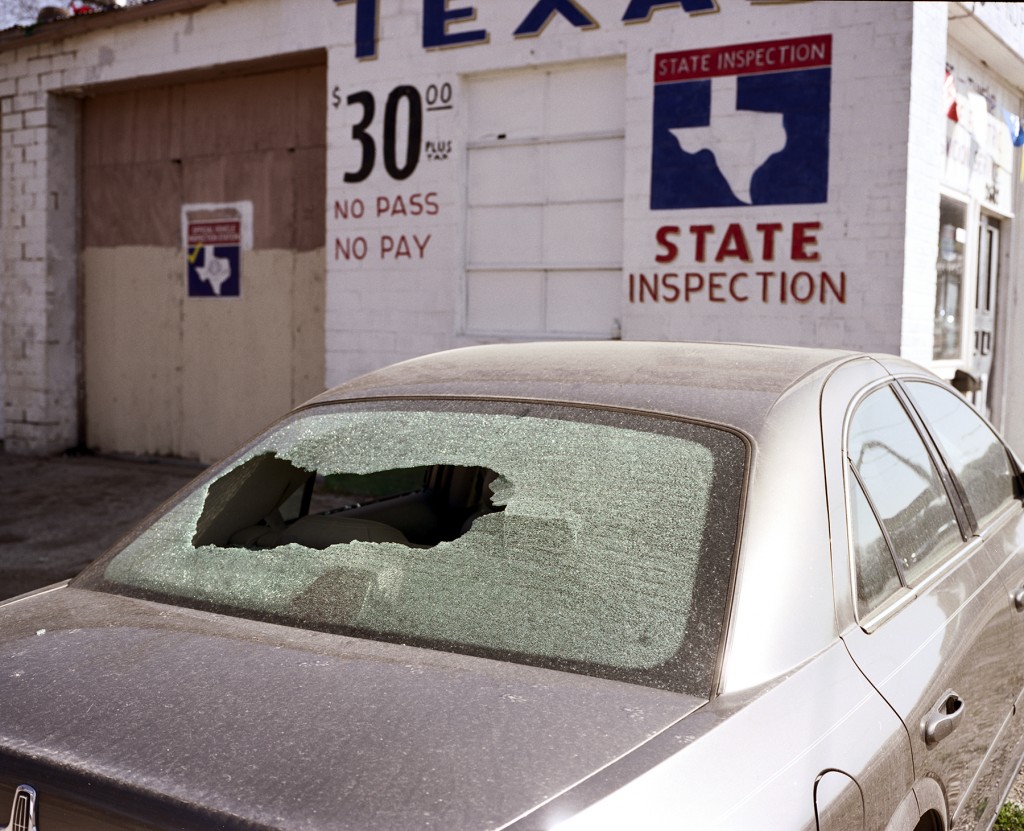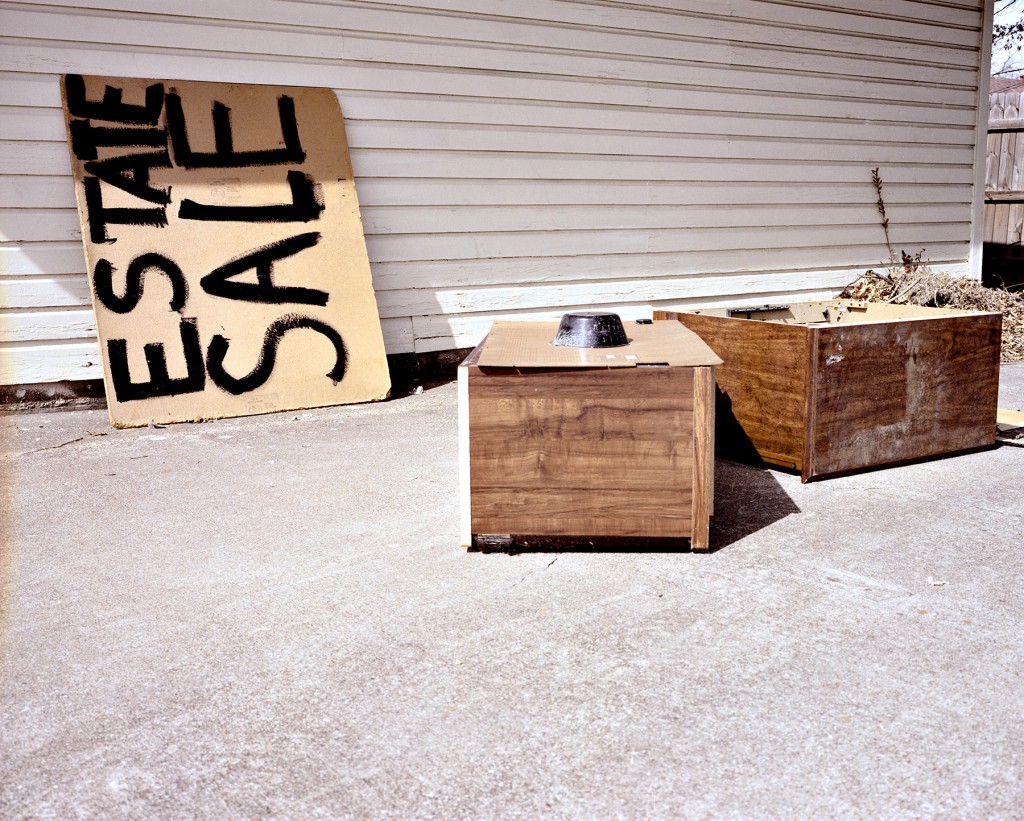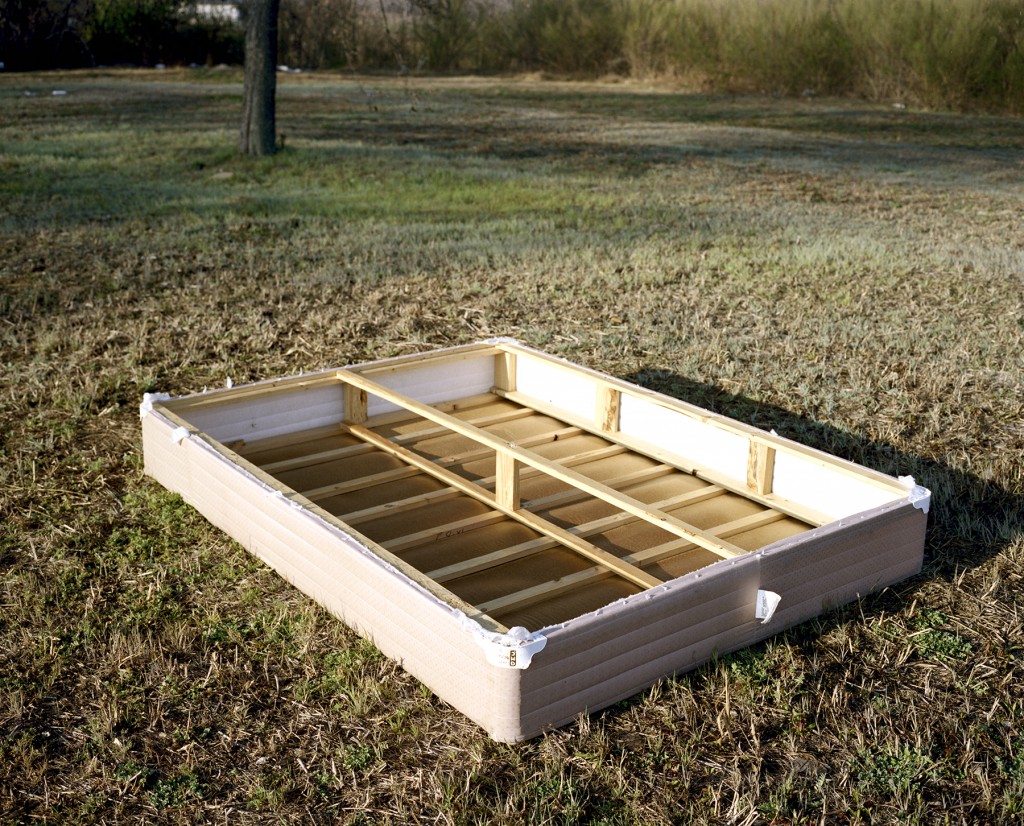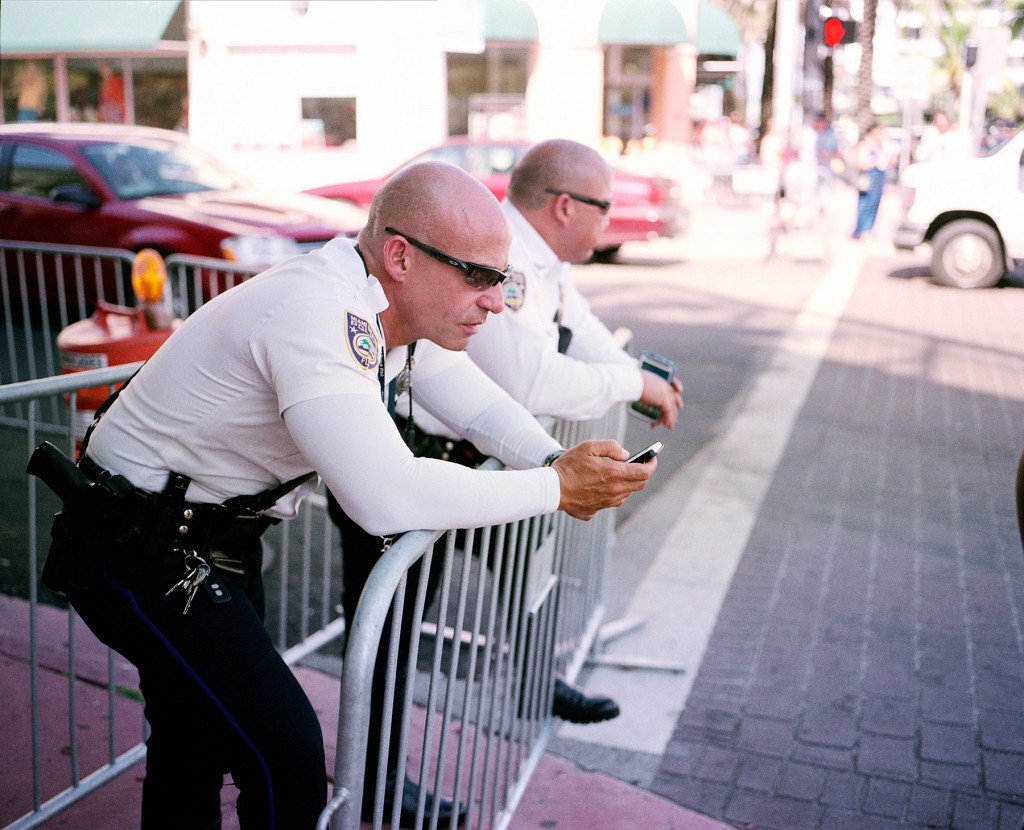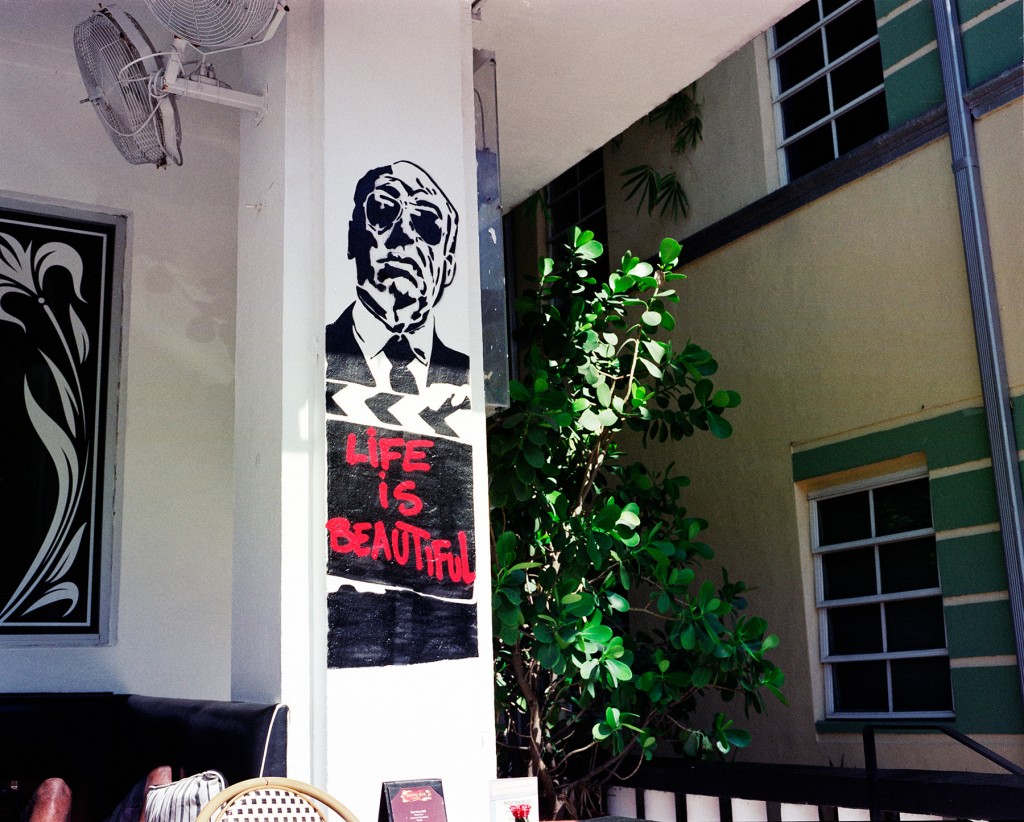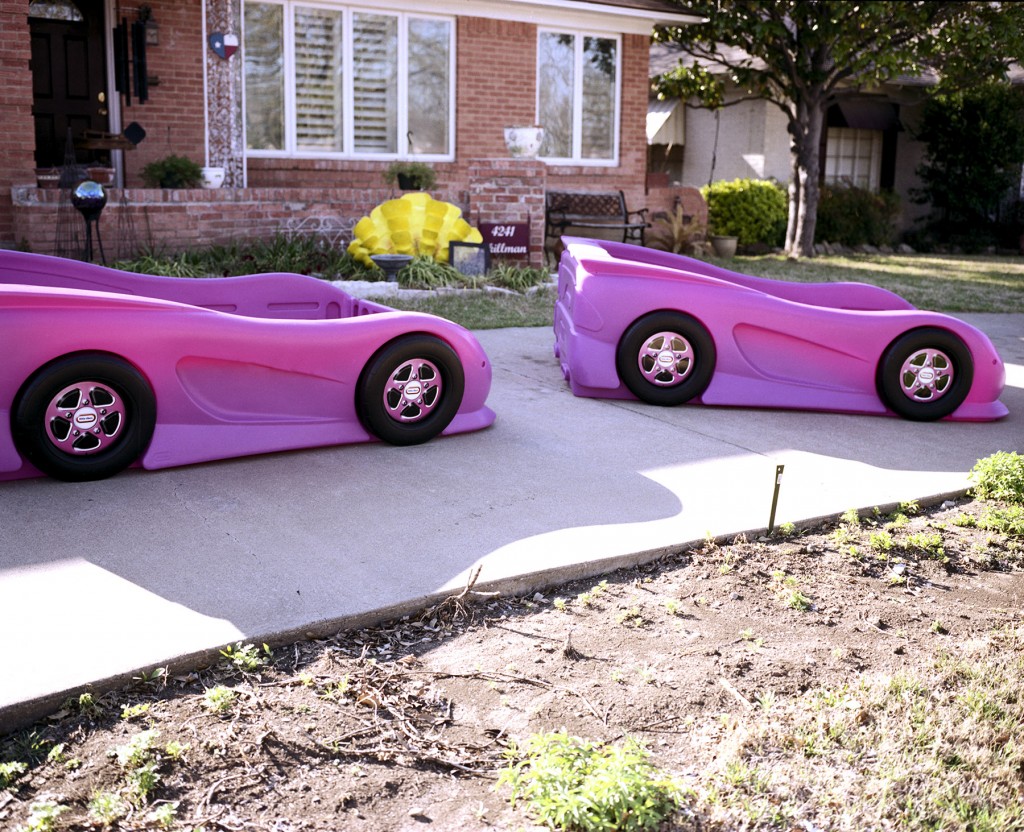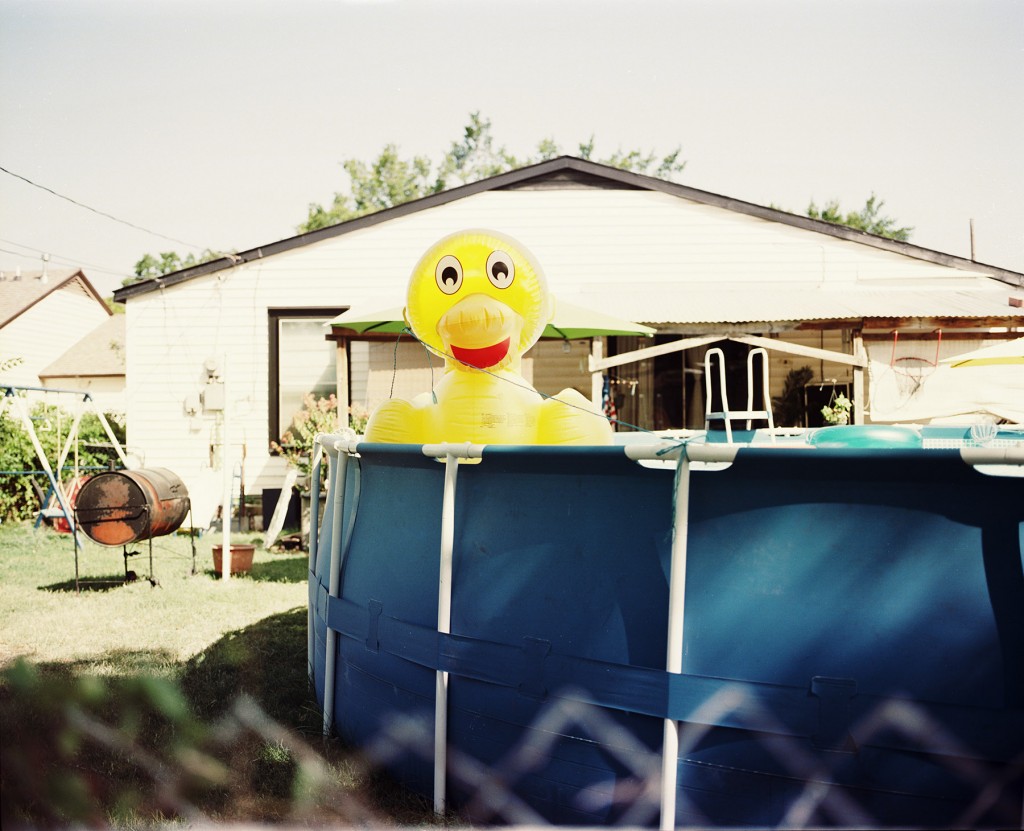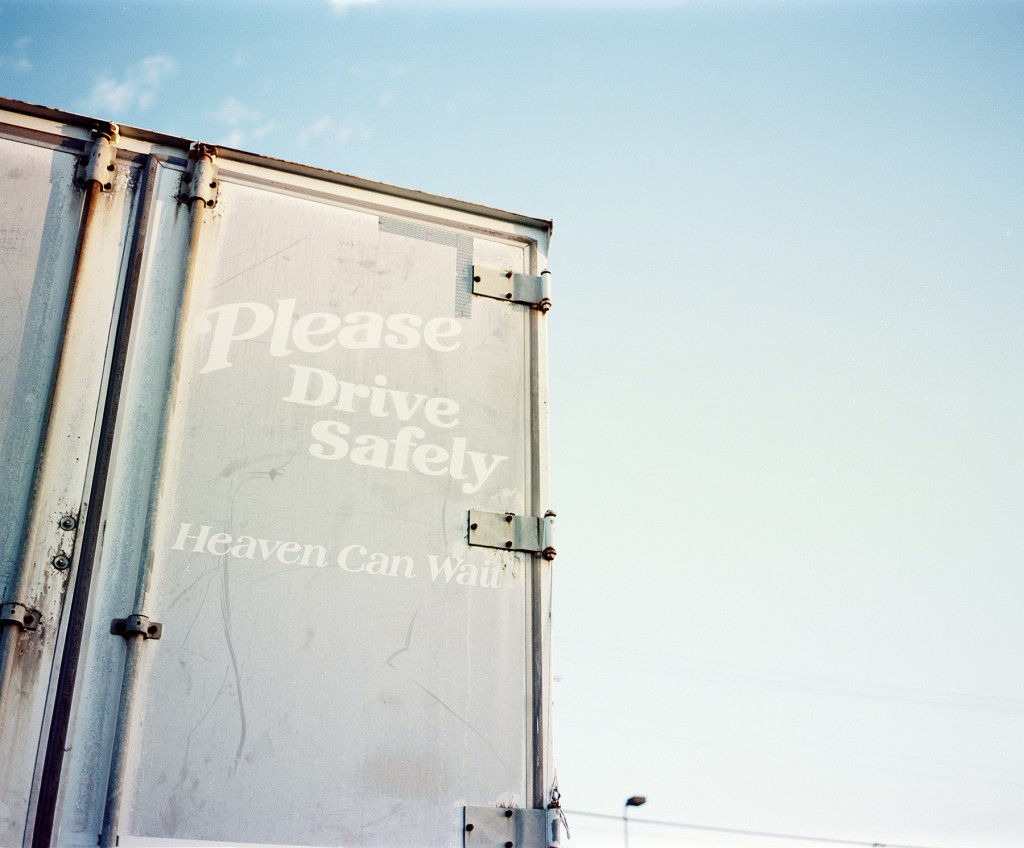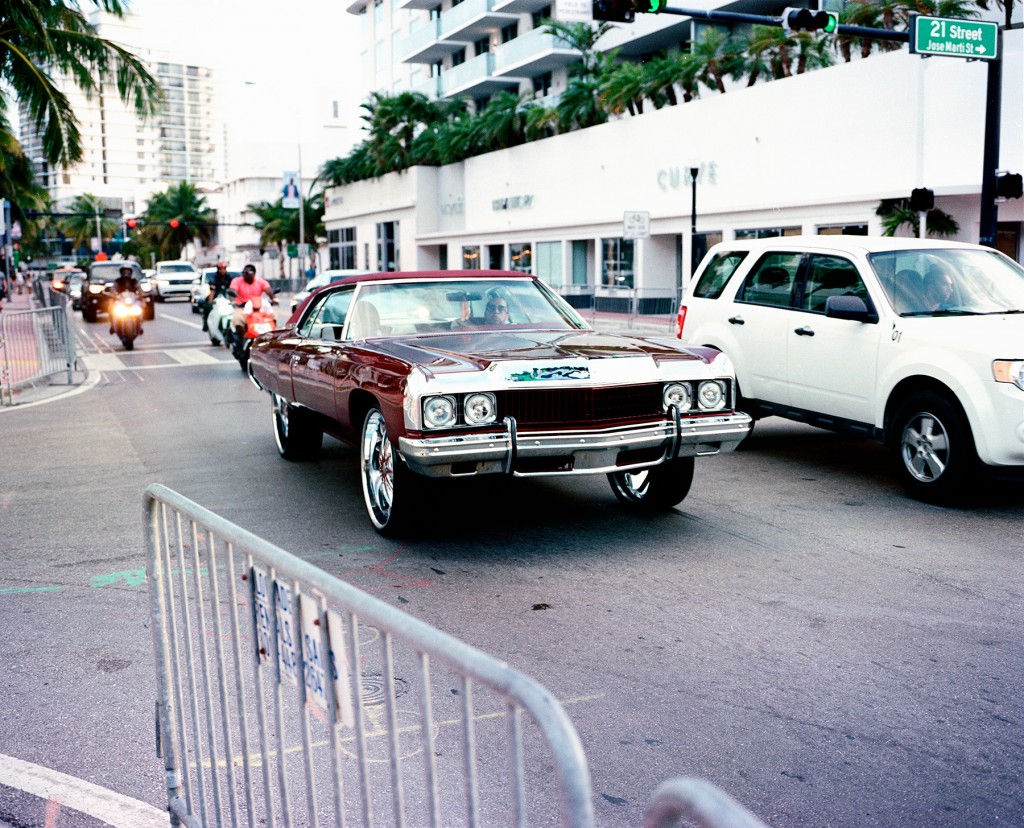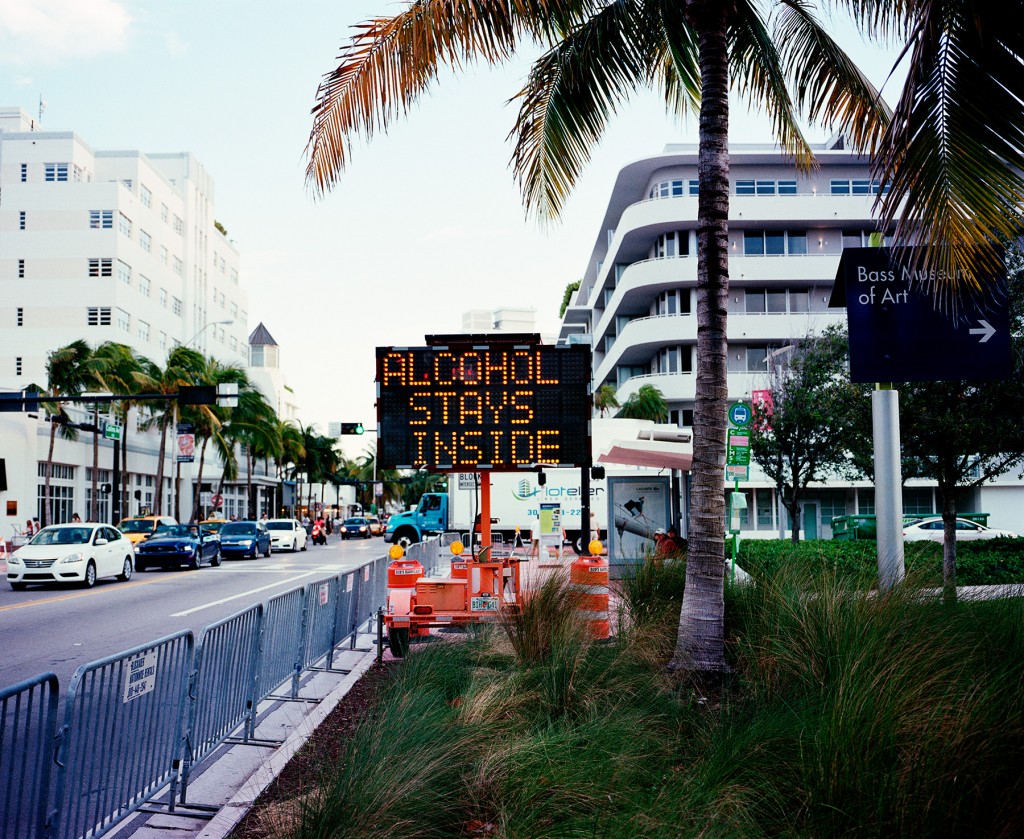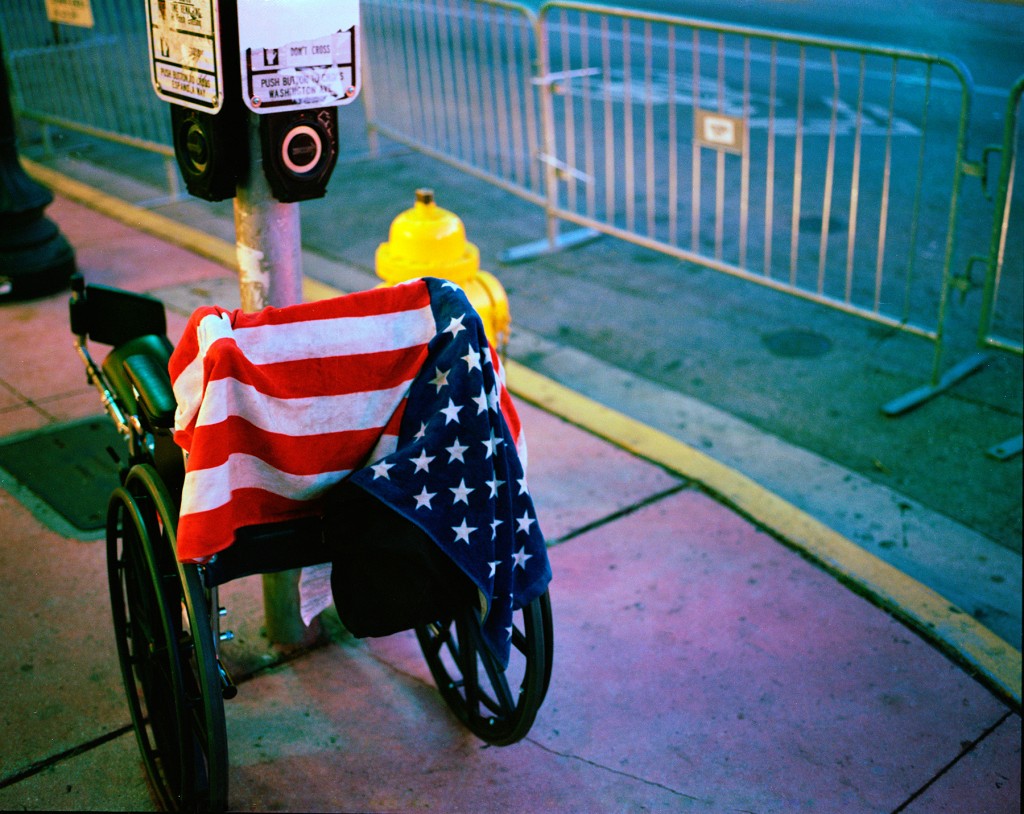There’s been quite a bit of radio silence on our end, that ends now. This is the year of film!
Question: I am looking for a good 35mm camera.
I received a message on Reddit from a user asking me what 35mm camera they should get. Of course this one question opened up many more questions because, as we know, there isn’t one camera that’s one size fits all.
Question:
“Hi, I saw you know stuff about film cameras and I was wondering if you can point me in the right direction for a 35mm camera that would take high quality photos? Any help would be awesome! Thanks.”
Answer:
Hi, sorry for the delay in my reply.
This is a tough question because there are many factors that contribute to high quality photos, but since you asked about the camera specifically, I’ll ignore the other factors that contribute to high quality photos including but not limited to: good lighting (natural or artificial), proper focusing technique, composition, framing, etc.
With film photography, you have a few components that will contribute to the end result. Lenses (including filters or no filters), camera body (probably the least important), and the film used.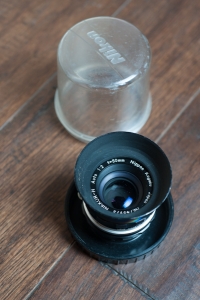
Of these three, the lenses are the most important. Give me an awesome lens over an awesome body. This is even more important in shooting film because in film photography, you can swap out film and in essence you have a new “sensor”. Something you can’t do with digital, you’d have to buy a whole new body for that.
Next, I would say the film is the next important. For me, I love Kodak Portra 400 film. In a very sharp, versatile film that allows shooting in, essentially, different ISOs (over and under exposing the film) due to it’s huge latitude. If you’re looking for more stronger colors, Kodak’s Ektar 100 is great and has a little more punch in color. If you’re looking for black and white, well, there are so many options still that if you ask 10 people you’ll probably get 10 different answers with 20 different ways on how they process their films. I’m a fan of the Tri-X and TMAX films from Kodak, but Ilford makes great films that I haven’t explored much.
 On to the camera body. Well, it’s a little (or huge) box that holds your film. Some will have no electronics so you have to do all the thinking and setting. For example: Older Leicas, other older rangefinders like the early Konicas, Nikon F and F2 with standard prisms, Canon F1 with standard prism, etc. There are some with some electronics to control the shutter and/or metering like the Nikon FE/FE2/FM/FM2(n)/etc, Canon AE-1, Pentax K1000, etc. Then you have the bodies that probably had more technology then the first space rocket like the Nikon F100/F5/F6, Canon EOS 1n, Minolta Maxxum 9, etc. What you gain from the bodies with more technology is more intelligent faster auto focus, a (potentially faster) frames per second (FPS), more advanced metering system. Of course all of that will mean nearly nothing if the user, you, does not know to override the camera’s settings when you know the camera is wrong with its settings. You are the photographer, you have to control the situation. That’s one thing I find with a lot of the digital users now a days, they rely so heavily on their cameras technology that they don’t know a better way to take a shot. I’m not dogging on digital photographers because I also am one.
On to the camera body. Well, it’s a little (or huge) box that holds your film. Some will have no electronics so you have to do all the thinking and setting. For example: Older Leicas, other older rangefinders like the early Konicas, Nikon F and F2 with standard prisms, Canon F1 with standard prism, etc. There are some with some electronics to control the shutter and/or metering like the Nikon FE/FE2/FM/FM2(n)/etc, Canon AE-1, Pentax K1000, etc. Then you have the bodies that probably had more technology then the first space rocket like the Nikon F100/F5/F6, Canon EOS 1n, Minolta Maxxum 9, etc. What you gain from the bodies with more technology is more intelligent faster auto focus, a (potentially faster) frames per second (FPS), more advanced metering system. Of course all of that will mean nearly nothing if the user, you, does not know to override the camera’s settings when you know the camera is wrong with its settings. You are the photographer, you have to control the situation. That’s one thing I find with a lot of the digital users now a days, they rely so heavily on their cameras technology that they don’t know a better way to take a shot. I’m not dogging on digital photographers because I also am one.
So, to answer your question. It depends. It depends on your budget, what you like to shoot, what kind of controls you like, and other things…
I’m sorry if this doesn’t fully answer your questions, but I hope it does bring up more questions for me. If you don’t know what you want, I hope that I can help you figure what’s best for you.
All We have is Us…
I’m a guy who loves independent things. Back in college all I wanted to do was watch independent films (I still love indies) and listen to local and unknown bands. I love when people believe in something so much that they’ll do anything to get it out into the world.
I love that there is a resurgence in film and film photography, people are buying Polaroid cameras and instant film thanks to the efforts of the Impossible Project, people are interested in alternative processes, and Ilford is reporting that a large percentage of film users are under the age of 35. People are interested in tangible photography, negatives, prints, etc again. I remember when my local camera shop had huge poster sized signs hanging from the ceiling with the statement “Are you Digital yet??” in large, bold, damming typeface, confronting everyone who walked through the door. That was 14 years ago, now when I walk in there, they have a nice little corner of the store carved out for film (even 4×5 film!), and a small fridge for the pro color films and Impossible Project packs.
I love that there are some companies out there willing to put out niche film photography products (think New55, Cinestill, Ferrania, etc), every new option available to us as film photographers in 2016 and beyond is nothing short of a beautiful thing. Every time I see something film photography related pop up on Kickstarter, I scramble to see if I have some extra funds lying around that I can buy into a reward level (if it’s something that I personally want), or that at least I can donate $5 or $10, even if I don’t get anything. Any time a petition to Fuji comes around (face it, we’re always petitioning Fuji to save something or bring something back film related, it seems that our misery brings them great pleasure…), I’ll put my name on it, even if it’s something that I don’t personally use. I remember there was one a while back regarding Velvia. Now, I don’t like Velvia’s colors, I was always more of a Provia guy. I never have shot it, and I never intend to, but I know there are thousands of my fellow photographers who do, who have bodies of work that are tied together with that film’s palate. If that petition would have asked for donations, I would have donated money, with the hope that if something was happening to a film stock or film related product that I cared about, that the community would help out, regardless if they had something personal to gain from it.
Over the past 5 years, I’ve joined in the kickstarters for the Travelwide, The Intrepid, Cinestill Medium format Film, and New55. KickStarter is a great way for the community to make sure these type of products see the light of day without having to enlist the help of investors / companies outside of our tribe. Investors that don’t give two shits about anything other than their bottom line and ROI (Return on Investment). Just imagine the Travelwide guys pitching their product to venture capitalists, like on Shark Tank…
We photographers can be a surly, hard to please bunch. Before I returned to film (and before I stopped paying attention to most of the photography forums), everytime a new digital body was released, there was always seemed to be a section of photographers who wanted to point out everything that was wrong about the camera (even though what they were pointing out is why the camera was wrong for them – big difference), and they wanted to make sure their voices were heard. Too much this, not enough that, why did they put that in it? It made me ignore all new camera announcements, and eventually stop frequenting photography forums altogether. When I returned to film, I started visiting only film photography forums, nicer people, no measurebating, no brand wars, no petty arguments. People who are more than willing to send random strangers things like film and small pieces for cameras like a film crank or spare lens hood, just because it was lying around, and they saw someone who could get some usage out of it. People who in the spirit of community would load up a camera, soliciting participants then sending that camera across the country (or world) for fellow photographers to shoot a roll or photo and send it on to the next anxiously waiting photographer. Could you imagine a travelling DSLR or Mirrorless camera?
Okay, the reasoning behind this post is something that you might have noticed gradually creeping into our happy little community; negativity. It used to be if you didn’t use a particular camera, film or paper, or you didn’t shoot a particular subject, you didn’t dump on someone else who did. Our individuality in our tools and methods was something that we celebrated. You sat back, asked some questions, maybe left that day inspired to try something new or different than what you were doing. Or you said nothing at all, and moved on to the next post. For example, I for one was super excited when the Travelwide was first announced, I didn’t shoot large format and I figured that this was a great entry camera that would enable me to shoot like I usually do, loose and from the hip, just with the reward of huge 4×5 negatives! I’ve never been much of a tripod shooter, I used to hate tripods (I’ve come around on that…). But the thought of a 4×5 camera I could toss in my messenger bag and pull out and take a quick shot (how could you not love the contradictory nature of a camera made for quick, casual shooting using 4×5 film, not really a format known for “quick shots”…) was just too good to be true.
When it was announced, it was obvious that this was for a certain type of photographer. If you loved the meditative aspect of large format, where you setup the camera after careful introspection and anticipation of just the right time where you knew the light was going to be just so, because you had pre-mapped it out days in advance using various tools and apps, you were not the Travelwide type of photographer. And for every five photographers or so that were eagerly picking rewards on the Travelwide’s Kickstarter page, there were voices that would pop up talking about things like the lack of movements, and how this was a waste of money, or a totally useless product. Explain to me how would any product that could possibly get someone interested in 4×5 shooting (and could possibly lead them to purchasing a more traditional 4×5 field or monorail camera, as well as purchasing fresh 4×5 film) could be a useless product or a waste of money?
About a year later, another new 4×5 product hit the streets, the Intrepid, a foldable 4×5 lightweight wooden field camera (like the other wooden 4×5 lightweight field cameras available, but thousands of dollars cheaper – another entry level camera, but this one was more traditional in that you had some movements and could mount lenses from 90mm – 300mm on it), again the negativity trickled in, mostly why bother with this camera when you could get a Crown or Speed Graphic at / around the same price? This is true, you could and still can buy a Crown or Speed Graphic around the same price as an Intreprid camera, maybe even cheaper, the only difference is that funding the Intrepid allowed a BRAND NEW COMPANY to produce a BRAND NEW 4×5 FILM CAMERA to give photographers an option, to purchase an inexpensive BRAND NEW FILM CAMERA (please notice the emphasis on brand new…), that they can get support for, and that they know they will be receiving a good product (Intrepid puts together every camera by hand – how many companies are still doing hand built products?). It also opens the doors for them to possibly try something larger (8×10, maybe an ultra large format – 11×14?). Or purchase a more traditional 4×5 field camera, or even get a monorail?
Take from this what you will, but we can all agree that the heyday of film being the only game in town has long passed. We’re a smaller, tighter more neighborly community now. We’ve got to support one another as much as possible, because if we don’t, no one else will.
All we have is us….
Did I really need a f**king Leica??
Disclaimer – the thoughts in this post are self reflective of my personal choice to buy a Leica M, I am in no way or manner criticizing anyone else’s decision to purchase, use or collect Leica M cameras.
Well does anyone really need a Leica? I certainly didn’t. There are plenty of other ways to shoot 35mm; you’ve got your point and shoots of different flavors, Pro SLRs (Nikon & Canon), cheap SLRs (like the Pentax K1000) Pinhole, Toy, etc. I had a couple of fixed lens rangefinders that I had fallen out of favor with, as I felt that something was missing when I was shooting with them. I wanted a 35mm interchangeable lens rangefinder, I like rangefinders. But I didn’t want to get a Leica. I wasn’t a dentist (I’m not an anti-dentite though!), I wasn’t a doctor, or a lawyer or accountant, or any of those high paying professions that probably have a camera bag full of very lightly used Leica gear sitting in their houses. I wasn’t some fanboy screaming on internet forums how Leica cameras and lenses are the best evar.
I’m not a celebrity:
But I wanted an interchangeable lens 35mm rangefinder, I liked the way I shot when I photographed with a rangefinder, I was loose, relaxed. Maybe it was something about not having that viewfinder black out? Maybe it was the quiet shutters? Maybe it was the way that people tended to ignore you with this small, quiet camera in your hands? I started researching different rangefinders:
- Zeiss Ikon
- Hexar RF
- Voigtlander Bessa Series
Pretenders to the Throne?
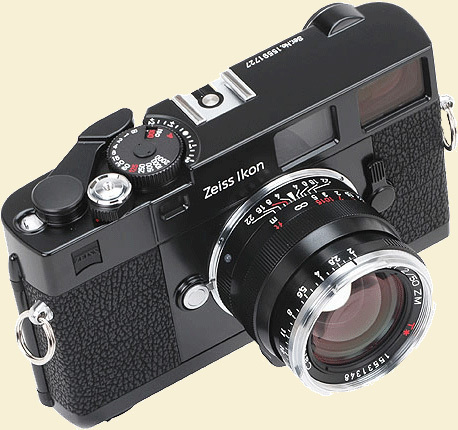
I really liked the Zeiss, but I couldn’t find too many people with long term impressions on the camera, I found some initial reviews and tests, and everyone mentioned the camera in comparison to the comparable Leica M (in this case the M7 – both cameras have electronic shutters and are battery dependent), but in most of these reviews there was this undertone of “This camera is good, but it’s not a Leica”. Maybe because most of the reviewers also owned one of the various Leica Ms, so they basically were saying (without saying), “This is a good camera, but not enough to replace my Leica.” And it wasn’t a common enough camera that you could happen to run into someone shooting with one so at least you could cop a feel on it (camera feel is very important!) And not having a store locally that I could just run to check one out, left me with only the option to buy one, and then hope I could get back what I paid for it if it wasn’t the camera for me, not really a chance I wanted to take.

I wasn’t too initially high on the RF because it was a motor driven camera, and I really wanted a rangefinder with a manual advance lever, so I dropped it from my consideration without giving it too much thought.
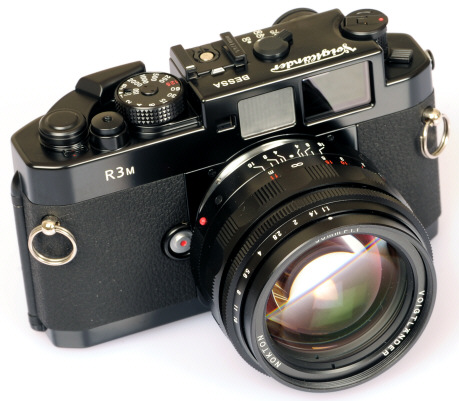
The Voigtlander Bessas were priced right for my budget. At this point was really interested in buying a Bessa R3M + the 40 1.4, which would allow me to slide into the world of 35mm Rangefinders with a complete setup for the price of a Leica M6. Through a local film photography Meetup group, I was actually able to handle a R3A. It was nice, I didn’t shoot it as I didn’t want to waste someone else’s film, I liked the feel of the camera and the viewfinder, but something just wasn’t right. I couldn’t put my finger on it. But I started shopping for a R3M anyway, my want of the rangefinder was trying to trump my instincts and this odd feeling that I had about owning a Bessa. This feeling had nothing to do with the build factor, or the rangerfinder base length, or the viewfinder magnification, or any of those technical things that people put so much stock into when making a camera purchase.
Enter The Leica
Months after I was able to handle that R3A, I went to an Instant film photowalk at the State Fair of Texas. One of the other photographers there, just happened to bring his Leica M6.
I asked if I could hold it
I brought it up to my eye and looked through the viewfinder, the framelines and patch were sharply defined. The Bessa’s was just as sharp and defined, and the viewfinder was just as clear, but looking through the M6, was just…different…
I felt the solidness of the body, it felt like one piece of metal, you could feel the craftsmanship (I know the M6 isn’t one of the classic Ms – where you REALLY can feel the craftsmanship, so I’ve heard….just go with me here)
The instant my hands touched that camera, the moment I looked through the viewfinder, I immediately knew what was wrong before, maybe I knew all along and I just didn’t want to admit it to myself…
I wanted a Leica
Any other M-mount rangefinder would just be a substitute for the camera in my heart I truly wanted. There are thousands of different camera models out there in the world, and we only have a set number of years on this Earth to photograph, so why would you want to waste them shooting with a camera that is a substitute for the camera your heart truly longed for? Even if it’s something that you have to wait and save up for?
The Cost of a Leica
A lot of people tend to look at own a Leica like owning a luxury automobile, expensive on the front end, expensive accessories (aka lenses), and expensive on the upkeep. I think of a Leica as one of those cameras you buy and you feel satisfied, even before you take a single shot with it, mostly because you know that with the upkeep, it will pretty much outlast you. It’s a ‘Forever camera’; that gives you a sense of satisfaction that you bought the camera that you truly wanted in your heart.
But, let’s face facts. MOST Leica’s are expensive luxury cameras (notice I said most)
- A new Leica M-A is $4100 (body only)
- A new Leica MP is $4300 (body only)
- A new Leica M7 is $4395 ($5795 with a 50mm Summicron f2)
So, yeah, when you look at those 3 cameras which Leica are still producing and selling as NEW (and expensive or not, props have to be given to anyone producing new film [and 35mm film cameras at that] cameras in 2017…). So for the most of us, these cameras are well out of our reach, so used is the way to go!
Okay, so given the fact that used cameras shoot just as well as new cameras, what are we looking at? I started out looking for a M6 which used run anywhere from $1200 to $1500 with some a little lower, some a little higher. I also was looking at the classic M4 which fell around the $900-$1100 range, only differences being that the M6 had 28mm framelines and a meter. I didn’t want the older M3 or M2 models, because I wanted the modern rewind knob and didn’t want to deal with the removal take up spool. The only camera I did not even consider was the M5 and that was simply because it wasn’t the classic M body style, although I’ve read somewhere that it has one of the best in-camera meters of any Leica, even the newer models. I was on eBay, KEH, B&H and Adorama almost everyday looking at M4s and M6s and lamenting the fact that I didn’t have the money for either of them.
The two ‘lesser’ Leicas
Somewhere along my search for my Leica, I became aware of two other models, the M4-2 and M4-P, these are generally thought of the ‘lesser’ Leicas because they were manufactured in Canada instead of Germany (due to Leica looking to cut down their manufacturing costs after the fallout over the release of the M5). The resulting bodies were made with stainless steel components instead of the hand polished brass materials, because of this, these two cameras can be a great bargain and generally can be found anywhere from $600 to $1000 depending on their condition. $600, that’s what I was talking about! So I began to search for the M4-P (as it was generally regarded to be the better of the two), and after a few weeks, I started to lament again, because I couldn’t find anything in the lower cost range, and then one day I went to Adorama.
And there was a G rated M4-P for $579
I knew it would take me 3 or 4 days to pull all the funds for it together, so I was hoping that it would still be there!
Those 3 or 4 days ended up being two weeks…
I just knew I had missed out!
I went back to Adorama’s used section, and there it was! It took me about .5 secs to hit “Add cart” then “checkout”
The two weeks ended up also being good because I was able to also get a Voigtlander 35 2.5 pancake lens to start out with, I like to call this the beginner’s Leica package, the M4-2 / M4-P and that 35 2.5, you can get out of the door with that around $1300 or so, and you’re ready to roll when it gets there.
I keep tabs on the tracking, anxiously awaiting when it would arrive on my front porch:
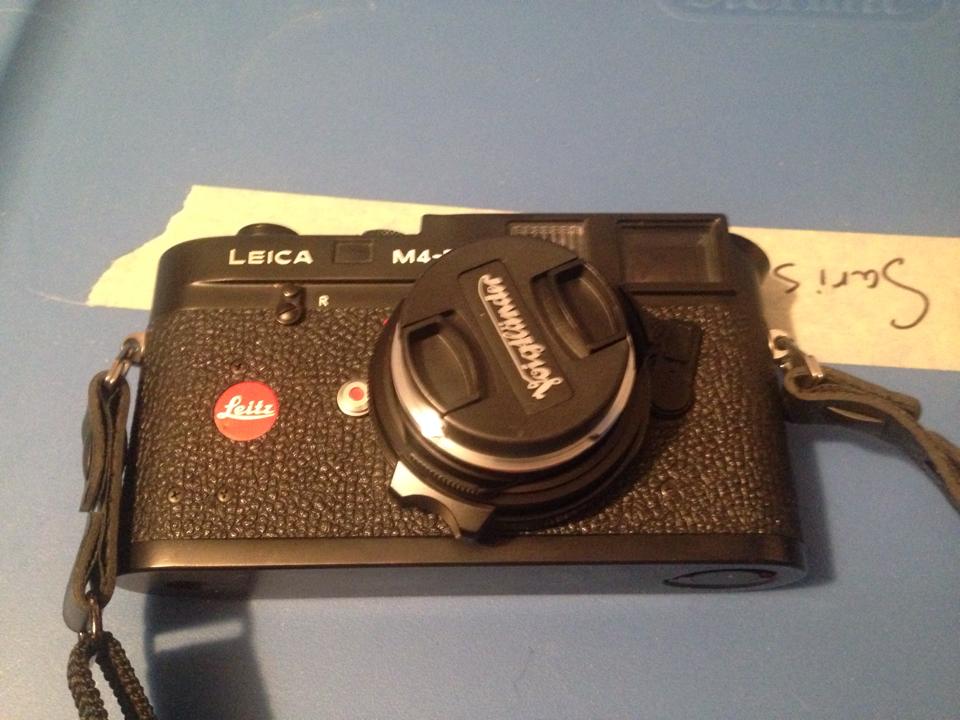
Opening the box and looking at everything, I had a weird feeling of buyer’s remorse, which is something that I never felt before with ANY camera purchase. I went over the camera to see why it was only $579, because looking at it, it was in almost perfect condition! I only saw one flaw, a dent on the top panel in front of the cold shoe. I ran through the shutter speeds, to my naked eye, all speeds looked right on. The only thing that really troubled me was the dent, could that mean that the rangefinder was out of alignment and run me another $200 or so for an adjustment?
The next nice day we had I went into downtown Dallas and burned a couple of rolls of Portra 400 to test everything out. Rangefinder was aligned and all shutter speeds were good! Because I was still feeling my way out and just testing the camera none of the photos I took are worthy of a second look, so they are not being shown here! But now that I had a Leica, what was I going to shoot with it?
To Be continued…
User Review – Bronica GS-1
The least talked about model in a criminally underrated brand….
“Buying my first medium format camera, any recommendations?”
“I want a medium format camera, but I don’t know which one, help!”
“Going medium format, but I’m clueless, where do I start?”
Over the last 15 years or so that the professional market has moved to digital, medium format film camera prices have dropped dramatically, and photographers have been able to buy gear at fractions of what they cost new. Film loving photographers were eager to take advantage of these bargains, but they might have been confused by the various format options and cameras that were available, so naturally, photo internet forums provided a place for them to ask these questions. Experienced photographers chimed in, with cameras that they had personal experience with, and one name almost always is left out these conversations totally (that is until one or two lone voices chirp up and say “Bronica”), then conversations for some reason turn into complaints about accessories and availability of parts. System reliability issues or how some wedding pros may have trashed their cameras during the 80’s. Or the photographer who started their career with Bronica equipment, just to “trade up” to a Mamiya or Hasselblad system as soon as they were able to. Usually those photographers are talking about the SQ 6×6 or the ETR 6×4.5 systems.
I’m going to talk about the Bronica camera that rarely is talked about – The GS-1

The GS-1 was introduced by Bronica in 1982 and designed to be a compact and lightweight 6×7 SLR, to go up against the industry standard 6×7 SLR system – the Mamiya RB / RZ67. Bronica only released 9 lenses in this system; 50, 65, 80, 100, 110 Macro, 150, 200, 250, and a 500mm supertelephoto. Shutter speeds are electronically controlled from 16s to 1/500, with flash sync available at all speeds. Like most medium format SLRs, the GS-1 was made to shoot multiple formats, from 6×4.5 to 6×7, in both 120 and 220 roll film. A polaroid back was also available for image proofing, but unlike the Mamiya RB / RZ cameras, you get a 6×7 image (instead of their 7×7) on the 3 1/4 x 4 1/4 print:
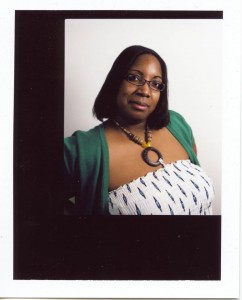
The GS system has two teleconverters (a 1.4x and 2x) and two extension tubes (18mm and 36mm) available. The 110mm Macro gives you a 1:4 image without extension tubes. Adding the 36mm tube allowed you to reach 1:1 magnification. The tubes are also useful because of the relatively long MFD (Minimum Focusing Distance) of the lenses (as compared to other camera systems). There are 4 finders available (Waist Level, Standard prism, metered prism, and a special 90 degree Rotary prism that allowed you to shoot the camera vertically on a tripod, with the addition of the Rotating tripod adapter).
Let me explain a little further about the rotating pieces. Many photographers point to the Mamiya RZ system’s advantage over the Bronica is that the film back of the Mamiya rotates from landscape to portrait, so you don’t have to turn the camera 90 degrees to shoot in portrait format. Because the GS-1 was designed to be as small as possible, it’s film back does not rotate, so to shoot portrait, you have to turn the camera 90 degrees. Which is perfectly fine if you are shooting the camera handheld with a speedgrip, but what about in the studio on a tripod? Bronica’s solution to that was to create two accessories, the Rotating Prism AE (for auto exposure – the prism provides spot metering and allows you to shoot in Apeture priority) G and the Rotating Tripod Adapter G:
Bronica GS-1 from Return ToFilm on Vimeo.
(While a creative solution to address this issue, be warned that these rotating accessories can be somewhat difficult to find (sometimes you can luck out and buy them as part of a lot of GS-1 equipment). Otherwise expect to pay around $100 for the Tripod Adapter and $200 for the Rotating prism.
What about the lenses? The GS-1 lenses were held up to be gold standard for Bronica, so much so after they created the coatings and formula for the GS-1’s PG series of lenses, they went back through their other camera lines (the 6×6 SQ and the 6×4.5 ETR) and re-released lenses for those cameras with the same formula. Which is why you have S and PS series lenses for the SQ series and MC and PE lenses for the ETR series.
Now, I’m normally a one lens type of guy, that is I buy a camera and usually I’m happy with only one lens, but I actually have four lenses for my GS-1! The normal 100mm f3.5 which one of the two fastest lenses in the system (the other being the rare 80 3.5, which was the last lens that Bronica released before the line was killed off by Tamron in 2004.) The Macro 110mm, then I have both wide angles, the 65mm and the 50mm. I’d like to get a telephoto lens (or two) to round out my system, then I’ll have a range of lenses to handle a wide range of shooting situations. Fortunately, because Bronica is so underrated, lenses won’t cost you an arm and a leg! The most expensive commonly found lens on the used market is the 50mm which can run you at the highest $300, the 65mm is usually a $100 or so less. The teles can be had for around $200 or so, with the 150mm usually the cheapest, I’ve seen some of those go as cheaply as $70!! Medium format 6×7 lenses for under a $100??!?! The only lenses that get expensive are the normal wide 80mm, and the ultra rare 500mm beast!

Interesting tidbit: The GS-1 also, is the only 6×7 camera that has the capability of shooting TTL flash! Using the Speed grip (which is equipped with a hot shoe) and the dedicated Bronica Speed Light G
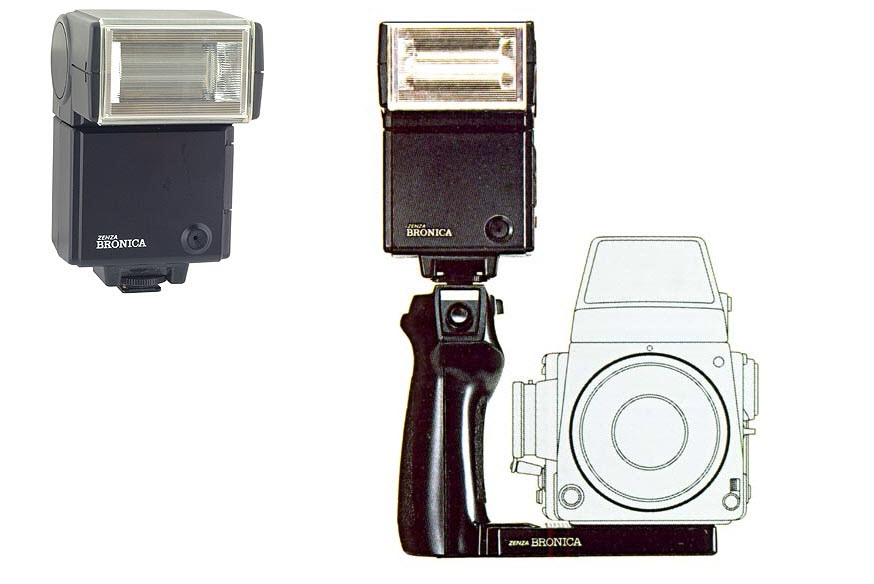
So what happened with the GS-1 you might ask? Why don’t we hear about or see more photographers using them? I’m not sure, I did a search for old photography magazines to see if there were any advertisements or marketing on the GS-1.
Here’s what I found:
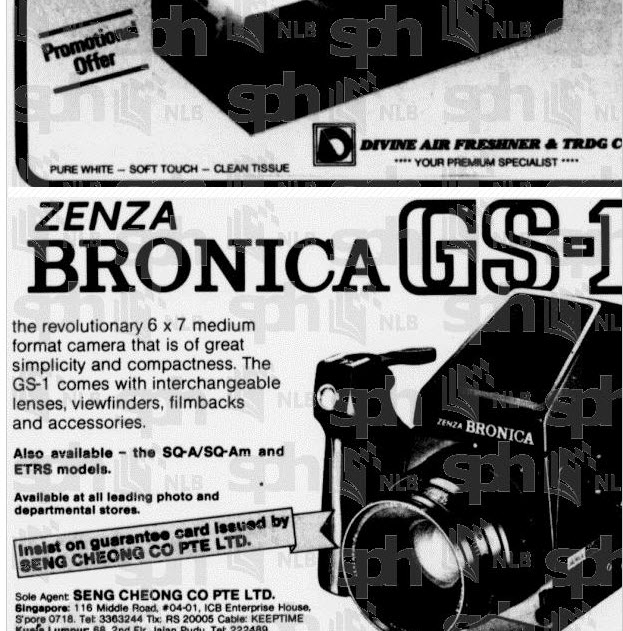
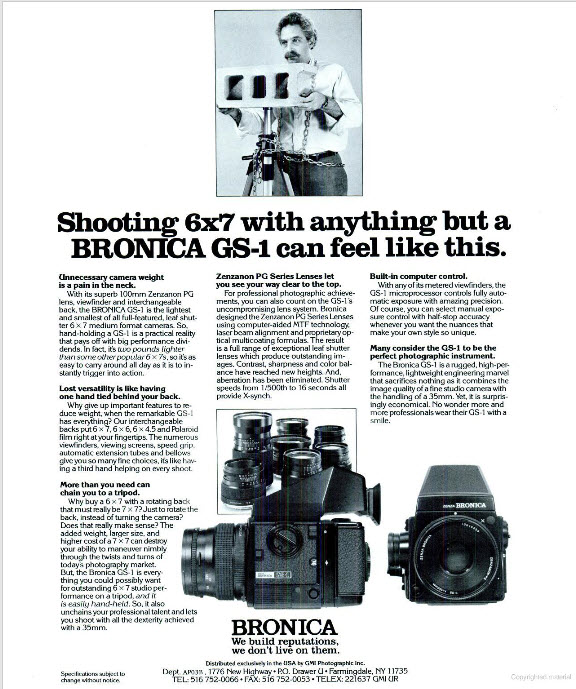
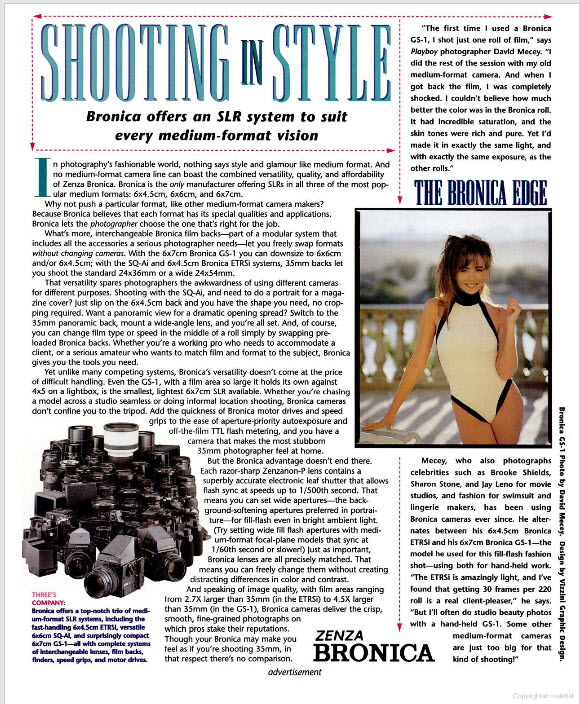

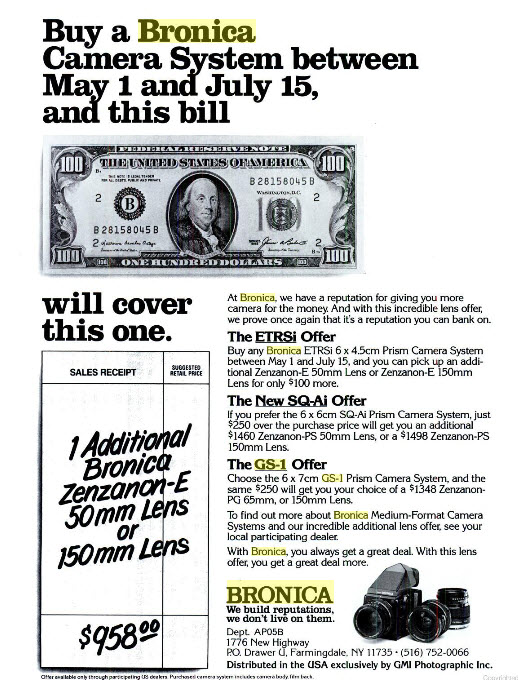
Seriously people?? How many other camera manufacturers during this time were offering a FREE EXTRA BODY when you bought a system setup (Body, prism, lens and film back)? Or if you bought a system setup, selling an extra lens for a major discount ($1300 lens for $250)??? Despite the above examples of advertising, this system was so under the radar, that now on the used market, finding some lenses & accessories can be quite a quest.(I spent months searching a combination of eBay, KEH, B&H, and Adorama looking for the 50mm before I lucked out and found an almost mint one on eBay). Unless you’re in Japan, the Japanese have tons of gear that seemed to never have seen any time out in the field – practically almost mint!
But seriously, after looking at those offers, I still wonder why we don’t see as much GS equipment in the second hand market. I guess it was difficult for the GS-1 to shine under the shadow of Mamiya. Although, I will put any of my Bronica PG lenses up against any Mamiya RZ lens (and a comparison of these two workhorse systems will be coming in a future Return to Film feature!)
Okay, how about some photos:
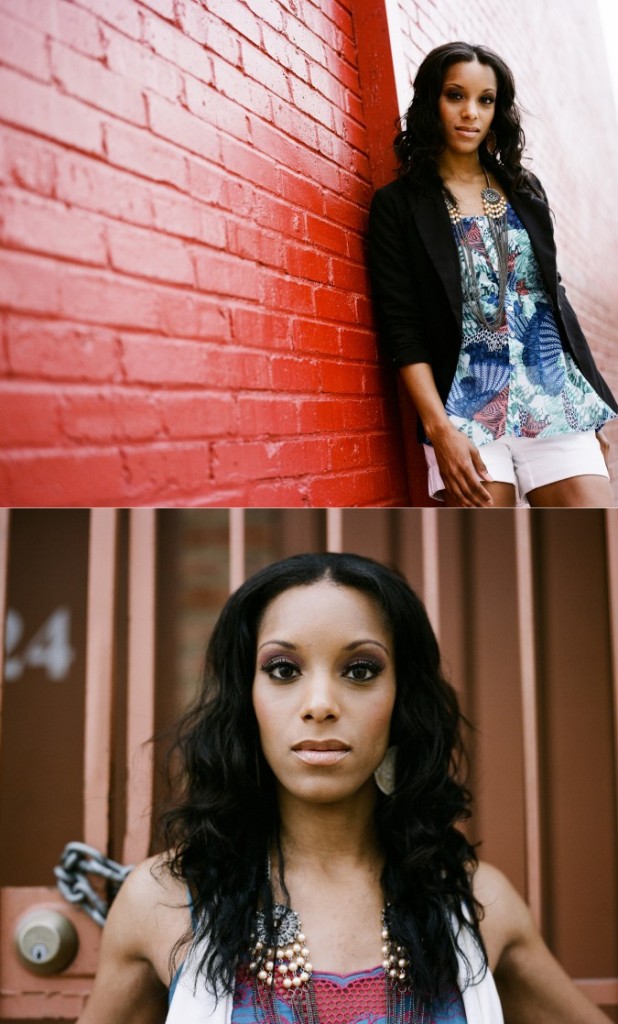

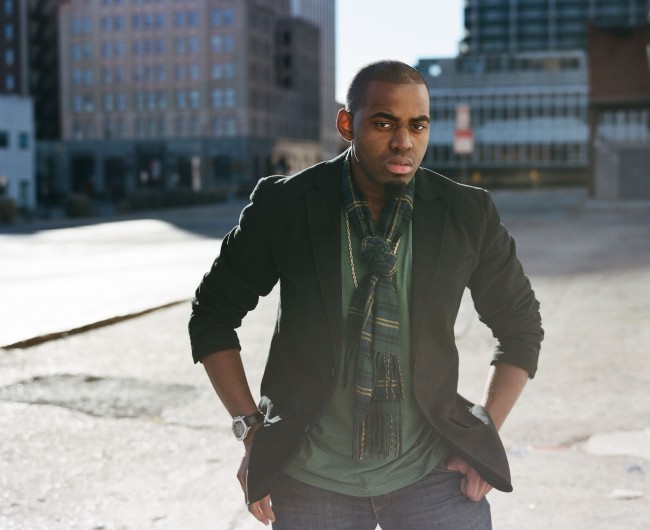
Lately, I’ve gotten interested in shooting at night, inspired by Patrick Joust of Baltimore, so I’ve been dragging the GS-1 through the streets of Dallas photographing interesting scenes. I hope to do a book of the images once I feel I have enough to complete an overall statement. The GS-1 is actually a pleasure to use at night, once you learn the dance you have to do with locking the mirror up.
Here are the steps that will get you a full 10 shots on a roll, because if you follow the directions in the GS-1 manual, you lose a shot after each time you wind.
- Focus and compose your shot and set your exposure
- trip the mirror lock up switch (on the bottom of the camera on the left side of the lens)
- take the shot
- move the MLU switch back to its normal position (I also re insert the darkslide at this point – not necessary, but I just like to do it anyways…)
- trip the multiple exposure switch, to set the camera for a multiple exposure
- wind the crank, this will lower the mirror
- set the multiple exposure switch back to normal
- wind the crank again, this will advance the film to the next frame
- get setup for your next shot!
All above photos shot on Portra 160 + 100mm
Here’s some shots with the 65mm, also on Portra 160:
I haven’t gotten a chance to take the 50mm for a spin, so no shots from it yet, but I suspect the image quality will be a lot like these other three lenses! The only lens that I’ve heard some less than glowing things about is the 250mm, and that was in the sharpness category, but I don’t have one of those (and I’m not really interested in anything longer than the 200mm), and I would take any opinions (even mine!) with a grain of salt…
I’ve enjoyed my time so far with the GS-1 (about 7 years and counting), it was my first “real” medium format camera, and I can see using it for as long as it holds up!
Highly Recommended*
*just be aware that it takes some time to build up a kit, unless you buy from someone selling a package deal.
Analog as F**k – a Minolta HiMatic AF2 review
The original idea I had for this article was to be about traveling / road tripping with non-photographers. Spouses, Partners, Family, Friends, basically anyone whose first thought when planning a trip isn’t “what gear do I bring??” But I decided to make it into an user review about the Minolta HiMatic AF2 as a perfect camera to bring when traveling with non photographer companions. Besides, not all of us are super neurotic about these things right?
These thoughts don’t sound familiar to anyone out there do they?
-I wonder if there’s space / and or time during the trip to bring the 8×10?
-Not enough room for the 8×10? Okay, okay, the 4×5 should be no problem right? It’s not a monorail, it folds up!
-What? We’re going on some guided tours when we get there? Well, alright, I guess one of my medium format kits should do the trick?
But maybe even the smallest, lightest medium format camera you own, is a no-go, and you start to look at your 35mm gear…
Not saying that I go through this checklist when I’m going on a non-photo trip (I don’t even own an 8×10….yet), but I did have some decisions to make this past August when a friend proposed a guys’ road trip to Birmingham, Alabama to attend an independent film festival. Being as I’ve never been to Birmingham, I wanted to have some gear that I would be comfortable with in any situation that I could possibly find myself in, and that I could work quickly with. I didn’t want to hold up everyone else doing photographer things, just want to be able to grab the shot and move on.
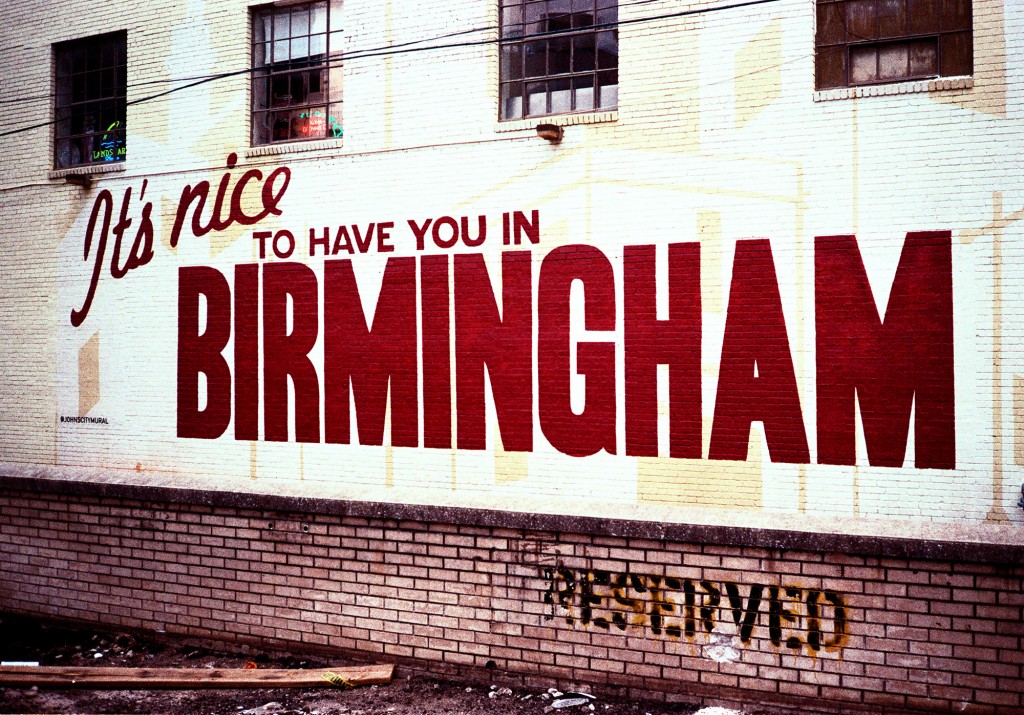
Looking over my stash of 35mm cameras, two jumped out as options:
-A Hexar AF
-And a recently purchased Minolta HiMatic AF2
Why? Well up to that point I had been using the Hexar to shoot a series of images loosely inspired by Lee Friedlander’s America by Car, just sort of my commute to and from work. I had been enjoying shooting with Hexar a lot up to that point, so I thought that I would have opportunities to use it on the road. The HiMatic AF2? Well, it was an impulse purchase from Hamish Gill of 35mmc.com, and I had only really shot one test roll with it. I really wasn’t all that comfortable with it yet. I’m not really sure what I was thinking, taking an untested camera on a road trip!
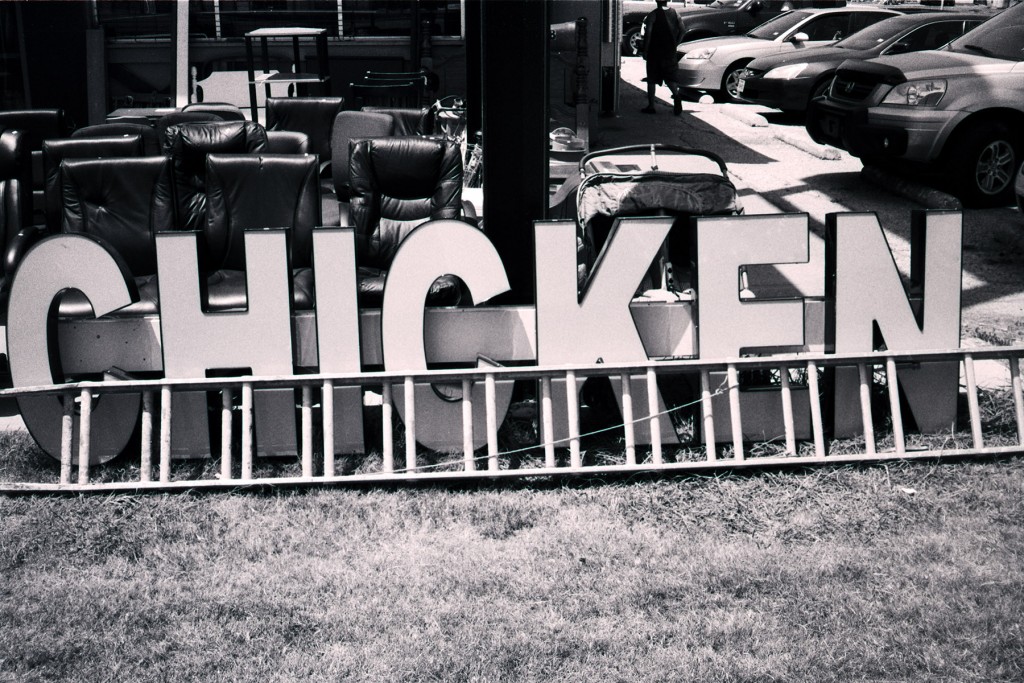
I grabbed a hand full of Tri-x and FP4 for the Hexar and about 8 rolls of Superia for the AF2 and packed for the trip.
While on the trip, something weird happened; the Hexar never left the hotel room. I never even took it out of my bag. Oh I meant to shoot some black and white, but I had been using both cameras without staps, and I wasn’t about to carry my backpack everywhere (I wanted to travel as light as possible), so I just carried the AF2 everywhere in my hand. After all it’s an extremely light camera (since it’s mostly plastic)

Background on the Minolta AF2, released back in 1982, it’s a camera that was caught in that in-between era of autofocus and pre-autofocus compacts. The era where it didn’t look weird to have a point and shoot consumer camera with relatively new tech like infrared autofocus with a manual film advance lever and rewind knob. It has (depending on how you look at it) a flexible 38mm 2.8 Minolta lens, that according to the manual has 4 elements in 3 groups (that is if you care about that sort of thing…). *PERSONAL NOTE** I actually love the focal lengths between 35mm and 40mm, those are walkin’ around lenses for me. Shutter speeds range from an 1/8 of a second to a respectable 1/430, and the lens goes from 2.8 to f17 (that’s an odd number, but that’s what the manual says!) The only disappointing thing in my opinion about the camera is that the min focusing distance is almost 3 and half feet. I like to get close with a moderately wide angle lens, it gives an interesting sense of space to a photo, and thankfully most lenses in this range can focus pretty close. So that this lens can’t is a slight negative in my mind, but that just means that you have to work around the limitations of the camera.
This camera is typical of the early 80’s era of compact cameras where it beeps at you if you try to photograph in certain situations; like if you’re too close (you’ll get a beep-beep-beep) or if you try to take a photograph without flash and the camera thinks you need flash, it will tell you (you’ll get a long beeeeeeeeep), and there’s a helpful sticker on the back just incase you forget what beep means what.
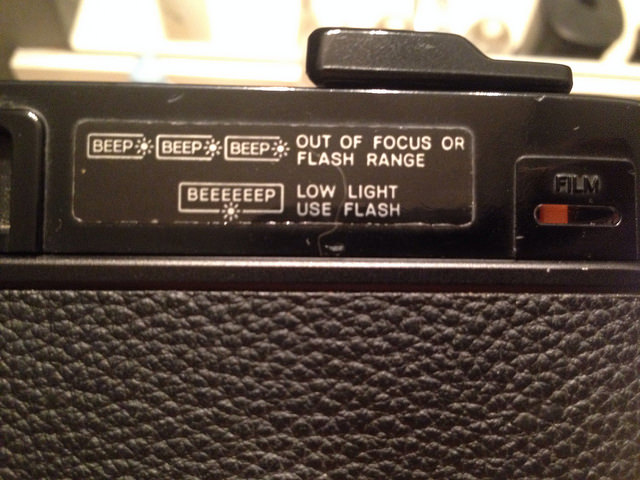
the camera has very few controls, you get a self timer lever in front, a switch that turns the flash on, and the film speed selector which is around the lens. The meter eye is right below the lens, so if you love to use filters, you don’t have to worry about exposure compensation since the meter will meter through the filter as well. I also almost forgot to mention that it takes two AA batteries. Common, found in pretty much any and every place on Earth AA batteries. No expensive lithium, or hard to find speciality batteries for this camera! Expect about 30-35 rolls before you need to replace them, although I’ve started doing it when the flash recycle times (around 7 sec) start to run a little longer.
Oh, if you do buy one of these, when you take a photo, the shutter lets out a wheeze, not a click, a wheeze. I’ve heard it referred to as a robot sneeze, that’s probably the best way to describe how it sounds. Weirdest sounding shutter I’ve ever heard.
The camera was a joy to shoot with during the trip:
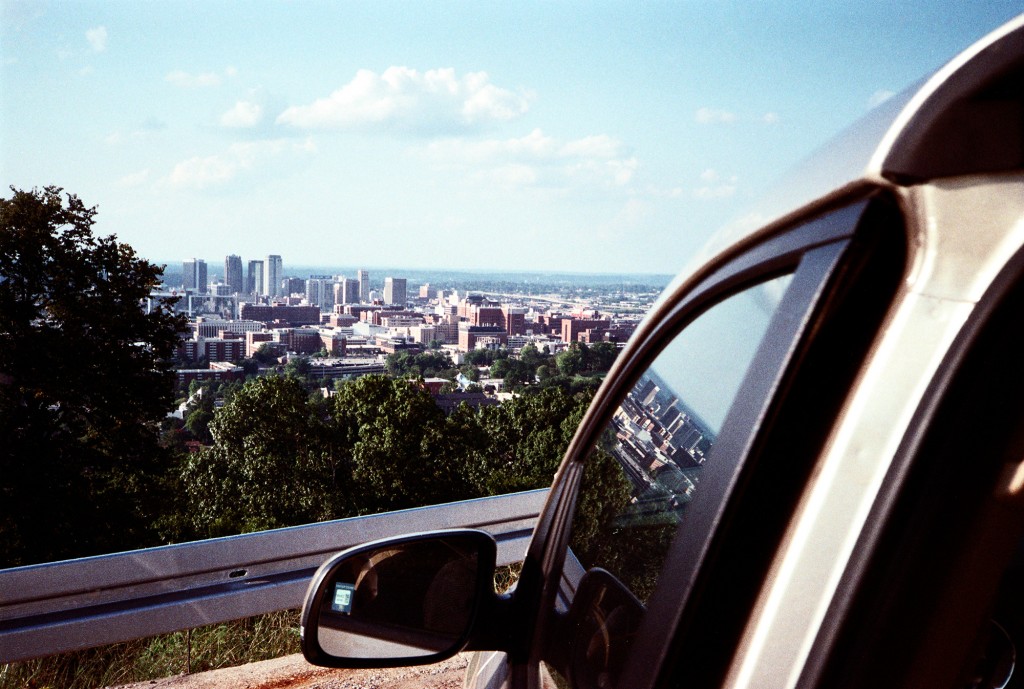
A lawn elephant displaying Alabama pride:
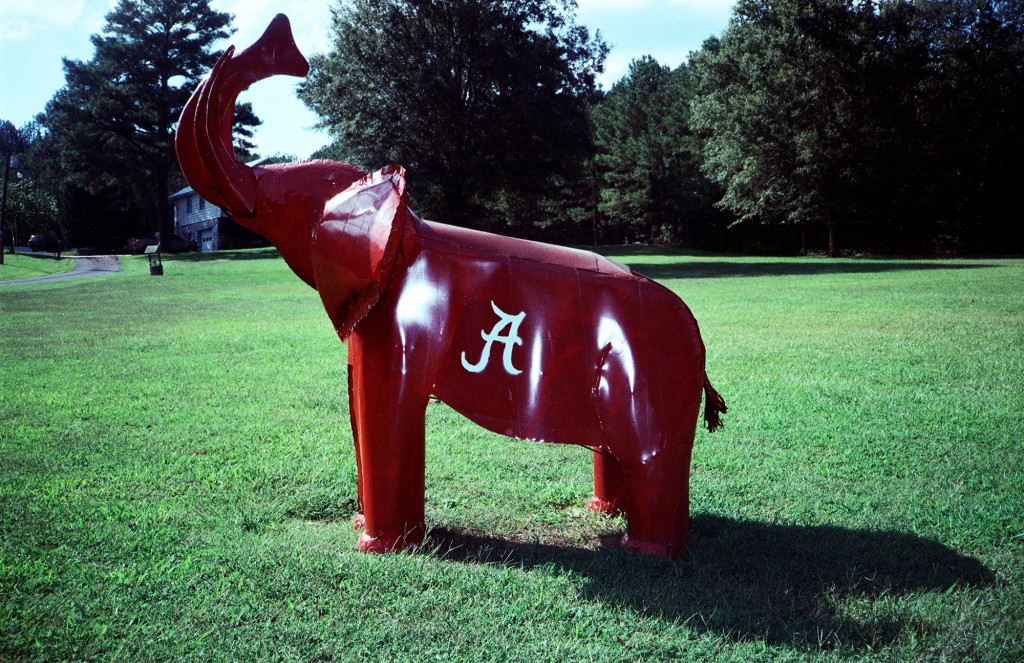
I know that people talk about the lost art of reading maps and atlases, but the fact that we have interactive maps and GPS on our phones is nothing short of amazing, I could just imagine how turned around we could have gotten on this trip 15 years ago…
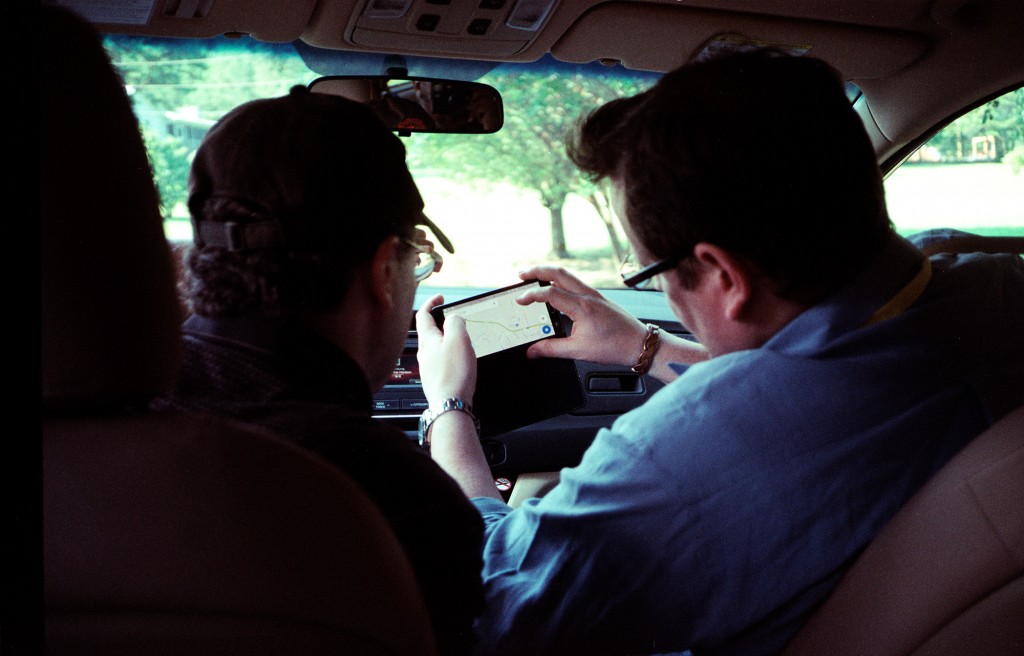
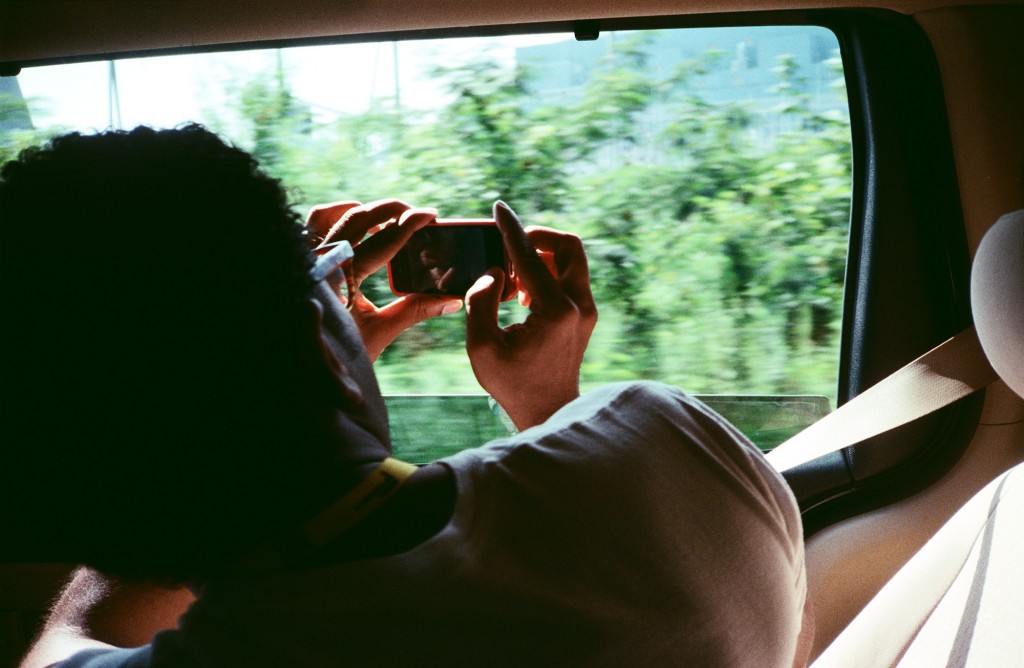
I didn’t know this before hand, but Birmingham has a strong mining and iron working industry. One of our stops was a closed iron factory, Sloss Factory:
I always like to keep my eyes open for little details like this that someone thought to write:
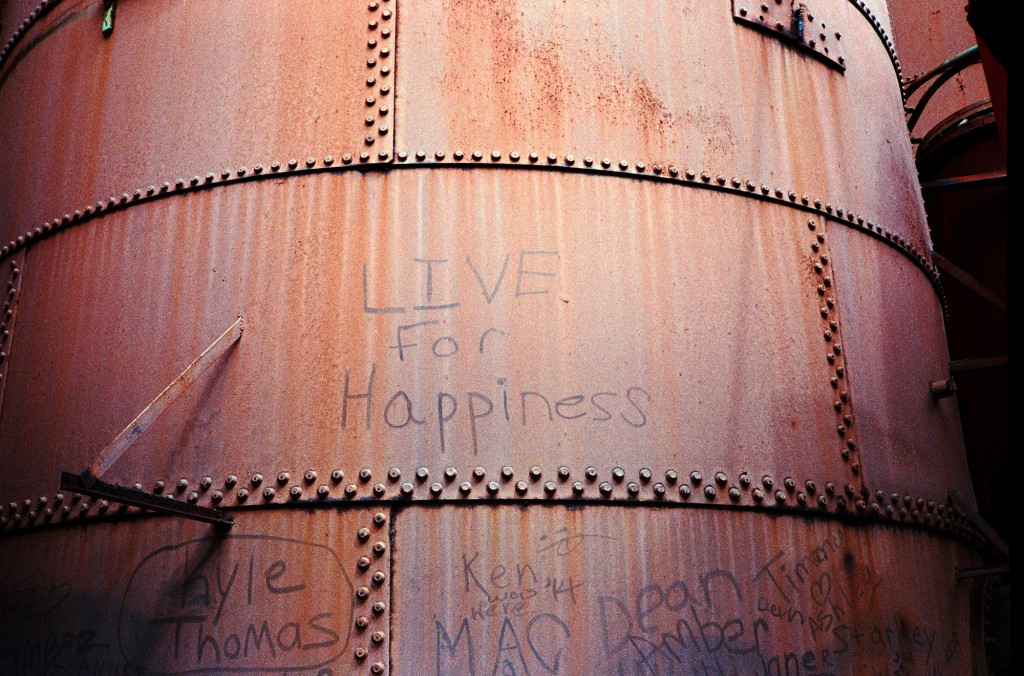
Birmingham also was ground zero during the Civil Rights era. I didn’t get a chance to visit the 16th Street Baptist Church, but I did run across this historical marker downtown:
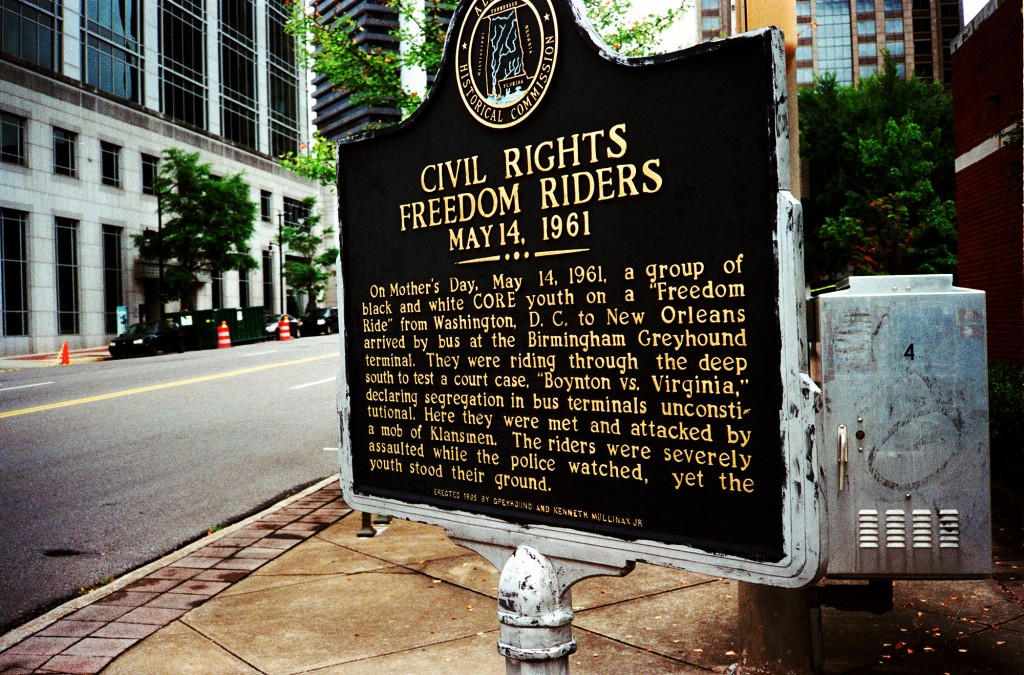
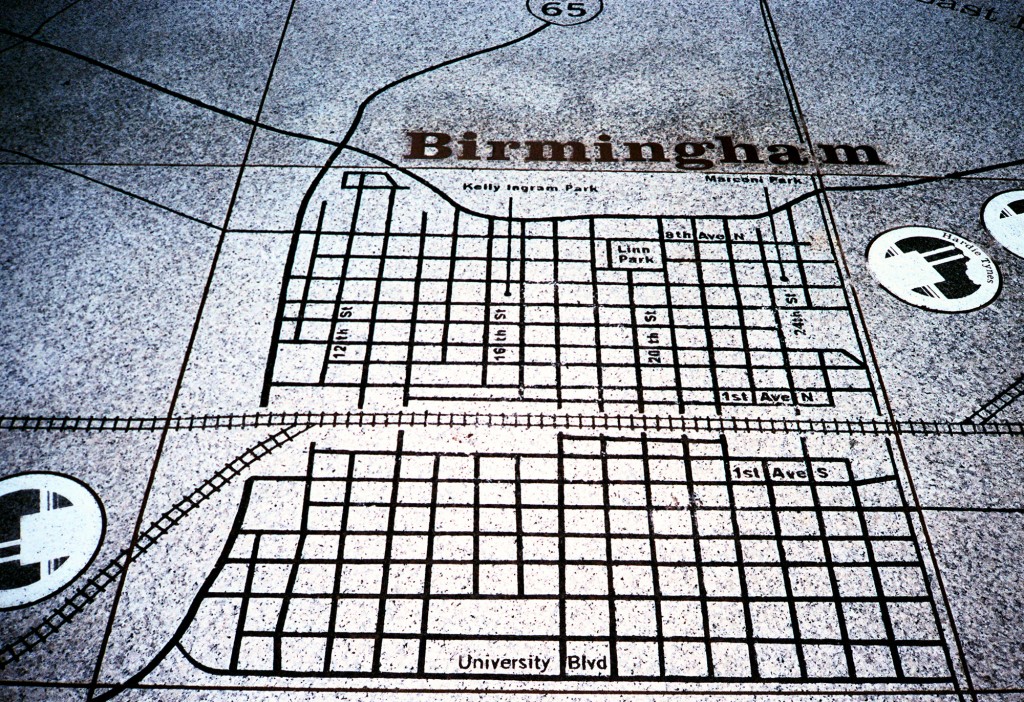
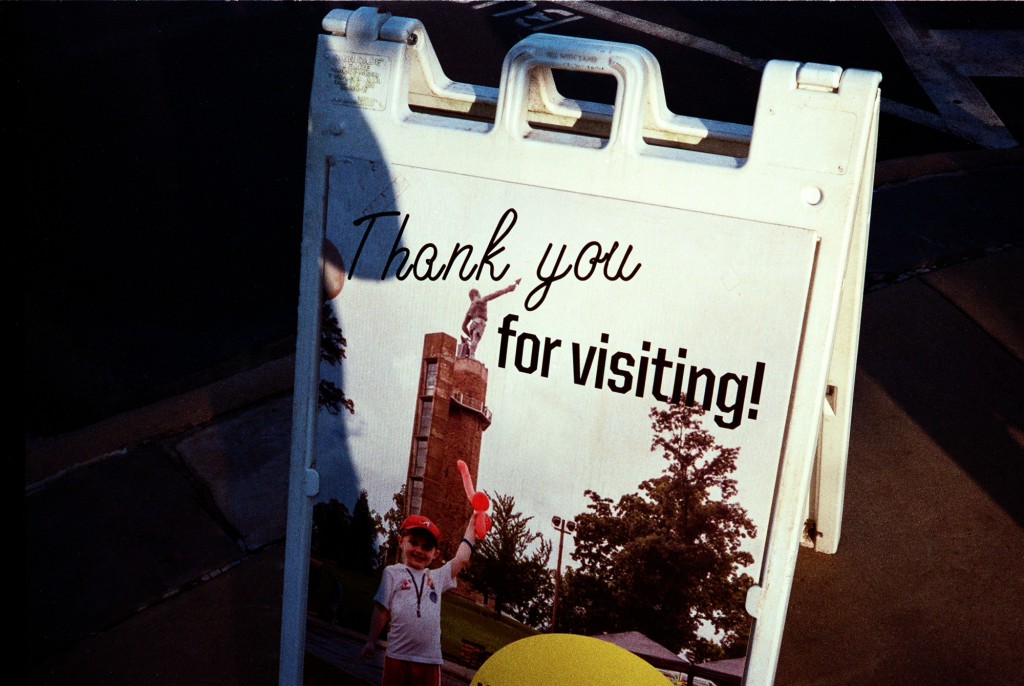
Because of the photos from this trip, I now have made the HiMatic one of my daily diary cameras (the other being my Olympus Stylus Epic), these are cameras that I keep loaded with film, and I make it a point to photograph constantly around the house. My wife, my child, the visitors that we have, our dogs, whatever might seem to have a bigger meaning 5, 10, 15 years down the road, I’m making photographs of it. Sending the film off and getting 4×6 prints (and my negatives!) back. This is the perfect camera for this…
Oh, and the title of this post? While we were in Birmingham, one of my friends noticed the HiMatic, and he remarked that it looked ‘Analog as fuck’, to which I replied “Why yes, yes it is…”
PS – I’d like to give an extra shout out to Lance Camera Straps, I loved this strap so much, that I bought a second one, so I have one on the HiMatic and the other on my Leica M4P
2016 and we’re still returning to film…
Just a quick post to say that we had a busy 2015 outside of Return to Film, which is why there weren’t that many posts. The new year will bring lots of exciting things for all of us, and we plan on talking about them here!
Holga, we hardly knew you (1982-2015)
These are my Holgas, there are many like them, but these two are mine…
You’re responsible for my first experience using film bigger than 35mm, you changed me forever, I want you to know that…
Before I met you, I was a different type of photographer:
I was uptight
I was dogmatic and rigid
I made my photographs a certain way, with a certain type of camera. It had worked for me for over ten years, and I hadn’t planned on changing anytime soon. Until I returned to college in 2004 to pursue a BFA in Photo, and you were a requirement for my intermediate photo class. You were boxy and plastic, you felt cheap, hell you looked cheap.
You were also uncompromising, you asked me to do a lot but you gave me so little to work with:
- one shutter speed (1/100 of a second – which wasn’t always 100% accurate)
- “two” apertures
- zone focus
- a wide angle plastic lens that I couldn’t change
- and you weren’t light tight, all sort of weird leaks always made their way onto the film, so much that taping you up with black gaffer tape was just an excepted ritual to prepare a new out of the box Holga to shoot its first roll of film
You asked me to let go, let go of that sense of control, of those set in ways that I had. Besides, you didn’t have a range of 8 f-stops, you didn’t have a shutter speed of 1/2000, you didn’t need to make sure you were in perfect focus.
You weren’t about all that technical minutiae
You were about feeling the photo
The motto that was frequently associated to you and your similarly equipped brethren was “Don’t think just shoot”. I always hated that saying because it made everyone who chose you to make their work look as if they didn’t have a clue of what they were doing. And some didn’t, to them you were just an inexpensive toy to have fun with, and that’s okay. If there’s one thing missing in photography these days it’s fun.
But there were others, many others who saw the uniqueness of the photos you produced as the element they needed to create their statement to the world. Those hazily sharp / unsharp images could be interpreted as a dream, or a nightmare; there was always that additional layer of meaning that the viewer was confronted with. Maybe that’s why people either loved or hated the photos you made, you weren’t a tool that made literal photographs.
I bonded with you immediately, you were that fresh start that I didn’t know I needed. I was hooked from that first roll of Tri-x. Soon, you were all I wanted to shoot with. Maybe it was those larger negatives, maybe it was the freedom I felt when I was photographing with you.
Now the news is that more of you are going to be produced. The factory in China that manufactured you just up and destroyed and scrapped all their machinery. All retailers informed Holga fans that once their stock was gone, that was it. That’s a shame, you were the perfect teaching tool in today’s progressively digital world. Who knows how many more generations of artists you could have influenced… We had over 30 years with you, but that wasn’t long enough. Now, you’ve been relegated to a footnote in the history of film photography, a victim of the massive digital photo industry that won’t seem to stop until it’s consumed all that is analog, after all film is now a niche, and the Holga was the nichest of niches….
Me? I’ve neglected you over the past couple of years. When I load up to go shoot, I see you lying there, a thin layer of dust starting to settle over you. You’ve been waiting for me to load you with film. To continue working on that project we were so excited about years ago. And I pause for a moment, thinking about all the photos I’ve made over the last ten years with you.
I think that just two years ago, we were on our way to Chicago for me to attend my very first professional portfolio review, and the looks of some of the reviewers and fellow photographers when I opened my print box to reveal eighteen carefully selected 11×14 photos we had made together. We heard some positive feedback, and some negative. Of course that’s always to be expected, you’re an acquired taste and not everyone loves your flavor.
You taught me, to let go. Frame it loose. If I had second thoughts about the photo I was about to shoot, shoot it anyway. Film in the grand span of things, is cheap. I don’t often wonder about what kind of photographer I would be now if I never would have been forced to use you. Would I have eventually found my way to you?
Film is WORM
I don’t think that they consider your film important enough for a Viking’s funeral, still from Youtube user Mukeybear
As film photographers in 2015, we get used to addressing a certain set of questions whenever we are out shooting:
What’s that? [Or as a current meme goes – WHAT ARE THOOOOOOOSE??!] (Since most people that shoot digital are used to certain camera body types, most common being a DSLR, they are naturally curious or confused when they see cameras like rangefinders, TLRs, Large Format cameras, pinholes, Polaroids)
You can still buy film? (Why yes, yes you can…some places you can even walk into a camera store and give a person behind a counter money in exchange for boxes of film!)
Why are you shooting film? (I, personally generally answer this question either sarcastically or snarky [which I know that I shouldn’t] depending on how my mood is that day. Maybe the person is genuinely curious as to why, not trying to attack your medium of choice, but sometimes they are trying to attack your medium of choice so maybe they need a little bit of snark…)
How are you going to see your pictures? Where do you get film developed? – Now, this is actually a question to be addressed…
Why do I say that? Dealing with getting film developed is seen by most non-film photographers as one of the major negative (no pun intended) reasons not to attempt the whole film photography process. As the years go by, we see lab after lab close down, labs abandoning certain processes (like developing slide film), or abandoning their film processing all together. Now there are film labs out there that are doing tremendous business, we all know them; Richards, Indie Film, The Darkroom, NorthCoast, Dwayne’s, FIND, and many others. And those labs are great, there’s a reason why they are doing the business that they are. But for those of us who don’t want to mail off their film all the time (or don’t live close to these labs), or don’t want to get their hands dirty developing themselves, there used to be another option if you shot 35mm only.
That option for 35mm shooters? The 1-hr photo lab.
Remember the drugstore 1-hr photo? Drop off a couple of rolls, come back in an hour to prints (if you wanted them), some decent low res scans, and sleeved negatives! All for a fairly reasonable price.
Why would you use drugstore 1 hour processing????
- Maybe you’re doing a personal 365 day or 52 weeks photo project
- Maybe you bought a used camera and you needed to test it out
- Maybe you’re selling a camera and you need to test it out
Whatever the reason, the 1-hr photo lab was a nice way to experiment with different films, before you moved on to more serious shooting, or started using those same films in larger formats. Personally when I returned to film back in 2009, I was at my local Walgreen’s at least 2 to 3 times a week, adjusting back to my Nikon F3 and F4s, seeing if I liked 400H more than Portra 400, re-learning to shoot film. And that Walgreen’s got used to seeing me, the technician might say something like “nice photos” when I came back to get my negatives and scans. It was nice.
As the years passed, Walgreen’s (and other 1-hr photo places) began to stop developing film. Minilab equipment was stripped out of their stores (wonder what happened to it), and the ones that continued to develop film in store….their quality control went waaaaaaaaay down. Expired chemistry. “Technicians” that didn’t understand what film was and how it should be properly handled (I heard a story of a photographer seeing a photo lab employee using an un-sleeved negative strip to clean their fingernails).
Now many of these places are committing what to us should be the ultimate sin (even more than lab employees cleaning their nails with your negatives):
Film is now being sent out for processing, and you get a CD of scans, but…..no negatives.
They are destroyed, too much of a hassle (read: cost) to properly sleeve them and mail them back to you.
Throwaway culture has come to film photography.
But you’ve got the scans though right? Your photos are right there for you to view, and email them to your friends and family, post those suckers on Facebook, and hell if you wanted to print them you can do that too! You might be able to squeak a decent 8×10 out of those scans.
Photo CDs (even the archival ones) don’t last forever and since a lot of computers / laptops these days are dropping CD / DVD drives, you might not be able to even view them in 10 years.
But the negatives are supposed to be always there, film was designed as an archival medium, there are numerous articles showing photos made from 100+ year old negatives, some of them the earliest examples of color processes. Black and white examples go back even further. Our negatives are designed to outlive us.
Our great grandchildren should be able to look at old slides they dug out of a box in the garage.
Or have a print made from a 50 year old negative.
Film is write once, read many times…
User Review – Mamiya 7 Medium Format Rangefinder
Hello, today I’d like to talk about the Mamiya 7 medium format rangefinder camera. I guess I should start by saying that I like to photograph…..alot. Things like Resolution Charts, MTF curves, and all those quantitative lens performance measuring tools mean absolutely nothing to me, I just care about how a camera feels in my hands, and how I feel shooting it and the images I can make with it and its lenses. For me the Mamiya 7 is the one of the best options for when you want Medium format quality, but you want to carry a lightweight package, and you don’t want a TLR.
Personally, I’ve wanted one of these cameras for the past 7-8 years before I was able to buy one. Even with it being a film camera, the depreciation of film gear has still left bargain (or as I like to say shooter) grade cameras bodies + one lens still hovering around $1000-$1100, usually for the body + standard 80mm. If you want the newer 7II (which up to recently Mamiya still sold brand new), be prepared to pay at least $1700-$2300 used depending on condition for the same setup.
What’s the difference between the two versions?
-
The 7ii came in two finishes, a champagne silver finish, or a flat black. The original 7 only came in a titanium finish.
- The 7ii has multiple exposure capability.
- Different dark slide controls, the original 7 has a dial that you turn, the 7ii adds a lever that folds out.
- Strap lugs; the original 7 has its lugs on one side, so the camera hangs vertically on you. The 7 ii has the lugs in the standard position like any other camera.
Not worth the extra $$$ in my opinion, that money could go towards an extra lens.
Speaking of lenses, it’s an oft repeated statement that the lenses for the Mamiya 7 (and 6) systems are some of the best lenses, not just for medium format, but for any camera system ever made. I only have experience with the 80mm, and it’s pretty damn good.
Okay, the important part; how does the camera shoot?
The Mamiya 7 feels like an extension of your hand, the grip is very well designed, with handgrip grooves in perfect place for your fingers. The film advance is smooth for having to advance the large 6×7 frames in a single stroke (or multiple small ones, if that’s your thing). The shutter sound registers a barely audible “click”, it is a great camera to shoot people candidly (once they ignore the camera’s size), landscapes, cityscapes, and environmental portraits are this camera’s forte!
It also makes a good street camera* (if you are willing to shoot medium format on the street that is, 10 shots before changing film changes your rhythm – that is unless someone starts producing 220 black and white film again [Ilford, looking in your direction!], or you get some of the remaining color 220 that’s left out there…)
In all honesty, if you’ve shot any rangefinder style camera, the experience is the same, just a larger camera to hold. The first time I looked through the viewfinder, I was amazed at how bright and large the rangefinder patch is (having only shot with a Konica Auto S2 and an Olympus 35sp – both patches had dimmed over the years), the framelines move to indicate parallax error as you focus. And like any other interchangable lens rangefinder, the framelines change depending on what lens is attached.
Speaking of lenses, not many to choose from, not that you need a lot with a camera like this;
43mm Ultrawide
50mm Wide angle
65mm moderate wide
80mm Normal
150mm Tele
210 Tele
The 80mm F4 lens is a great walkaround lens, sharp and provides a slightly wider than normal field of view. It’s FOV is equivalent to a 40mm in 35mm terms. The only downside (if you can call it that), is that the Mamiya 7 + 80mm is considered a tad cliche because of it’s “look”, you know how certain camera / lens combinations (like a Leica + a 35mm Summicron, a Hasselblad or Rollei + 80mm Zeiss Planar) give a distinctive signature? The Mamiya 7 + 80 has one of those distinctive signature looks to it.
Okay, enough talk, how about some photos?
after buying the 7 in December of 2013, it pretty much became my feature camera for all of 2014
I believe these three are all Fuji Acros
